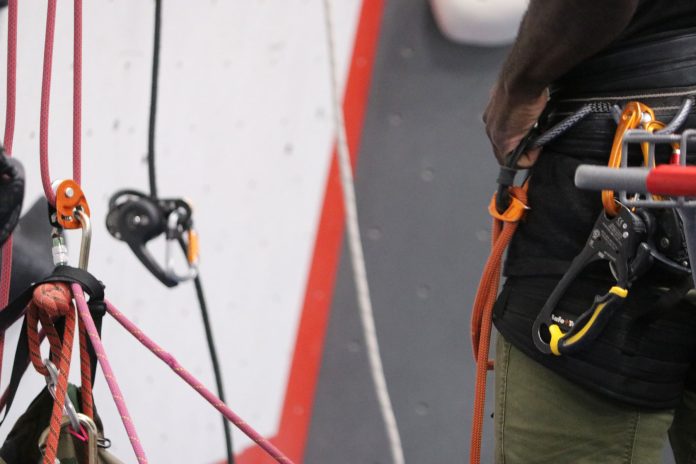
[Editor’s Note: This article was written by Foxman McCarthy-James, with support from Jackie Hueftle and the CBJ editorial team, as a ropes-focused supplement to 9 Routesetting Essentials and The Drill: A Routesetter’s Best Friend, which cover other essential routesetting tools.]
As the climbing industry grows, the realm of setting rope routes has evolved dramatically. Setters who ten years ago would be tying catastrophe knots below their GRIGRIs as they set out of a 5-gallon bucket clipped to their sport harnesses are now becoming rope access technicians with dual-rope systems and mobile fall arrest devices (though a catastrophe knot as a final backup is never a bad idea). While the rapid development can feel overwhelming to those of us who started in a lower-tech, less cumbersome environment, it signals an important move toward professionalism in the fast-growing world of routesetting. Setters are now getting MEWP Operator certifications in order to use boom lifts, and gyms are asking applicants if they have their CWA Work at Height Certification.
Knowing that I approach the subject of working at height from the perspective of a routesetter, I wanted to ensure that I addressed the blind spot in my experience. There are many professions that utilize similar gear, and as I have little to no experience working with brands that cater to arborists and tower climbers, I went to a local company (Arizona Hiking Shack) that specializes in rope access and rescue gear. I looked at gear from many companies I’ve never worked with, (including a CT Climbing ascender that nearly won me over with its integrated roll-clip pulley), but ultimately I concluded that the most practical focus for this article should be the gear that routesetters are most likely to encounter within our specialty. Companies like Skylotec, CT Climbing and CAMP Gear all manufacture work at height gear, but I will not be discussing these products here, due equally to my lack of experience with them and their absence from the common use within commercial routesetting in the U.S.
(Scroll down or click on the links below to navigate to each section.)
SUSPENSION
POSITIONING DEVICES
FALL ARREST SYSTEM
HAULING
MISCELLANEOUS
- Work Zone
- Spare Rope
- Lead Lines
- Extra Carabiners
- Helmet
- Slings
- Bit Holder
- Drill Leash
- Rescue System
- More Resources
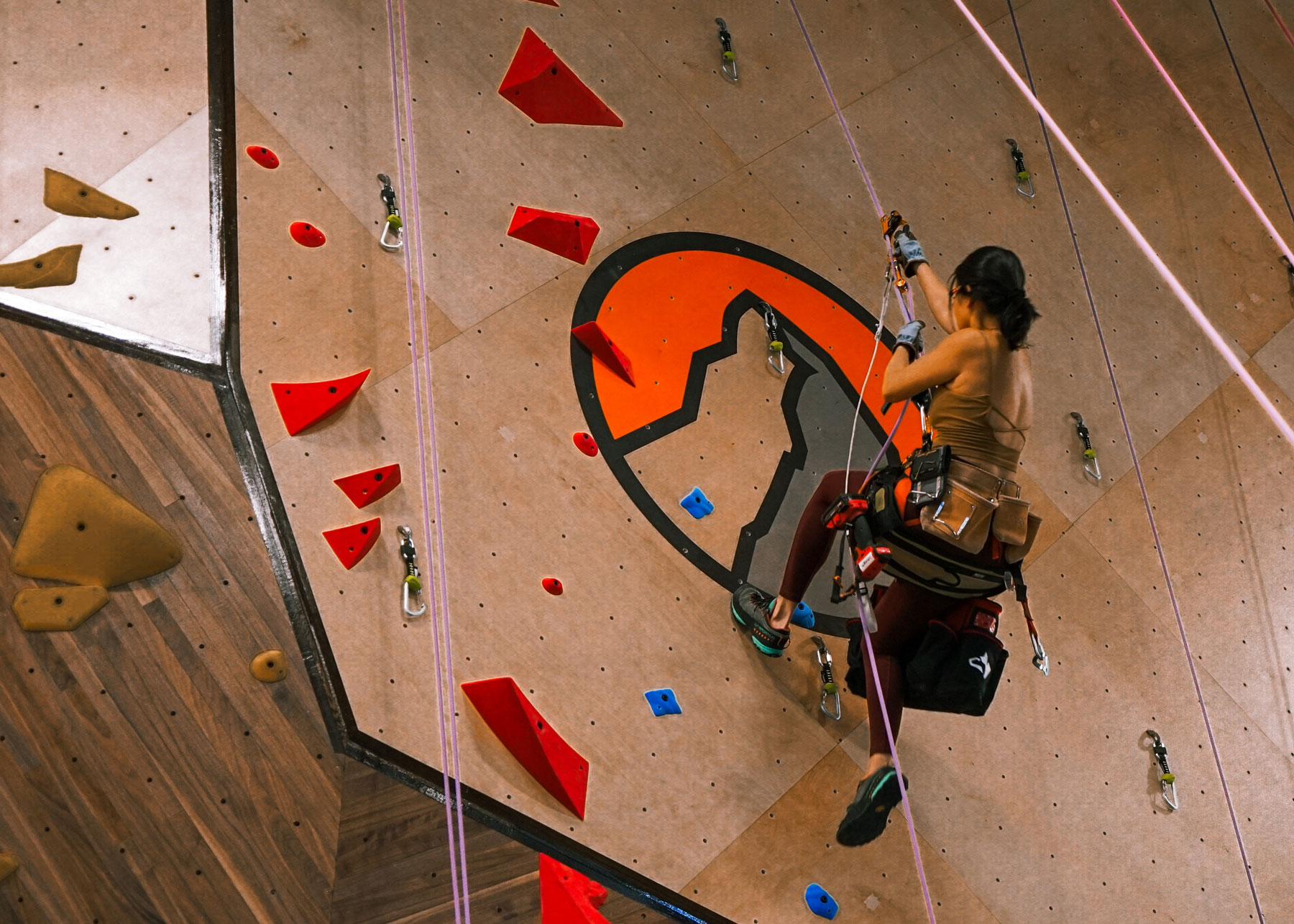
SUSPENSION
Let’s start with the basics. In order to do our jobs, routesetters need to be suspended—they need to be able to move and sit in a vertical space. Let’s look at the gear that allows us to protect ourselves as we efficiently move up and down rope systems.
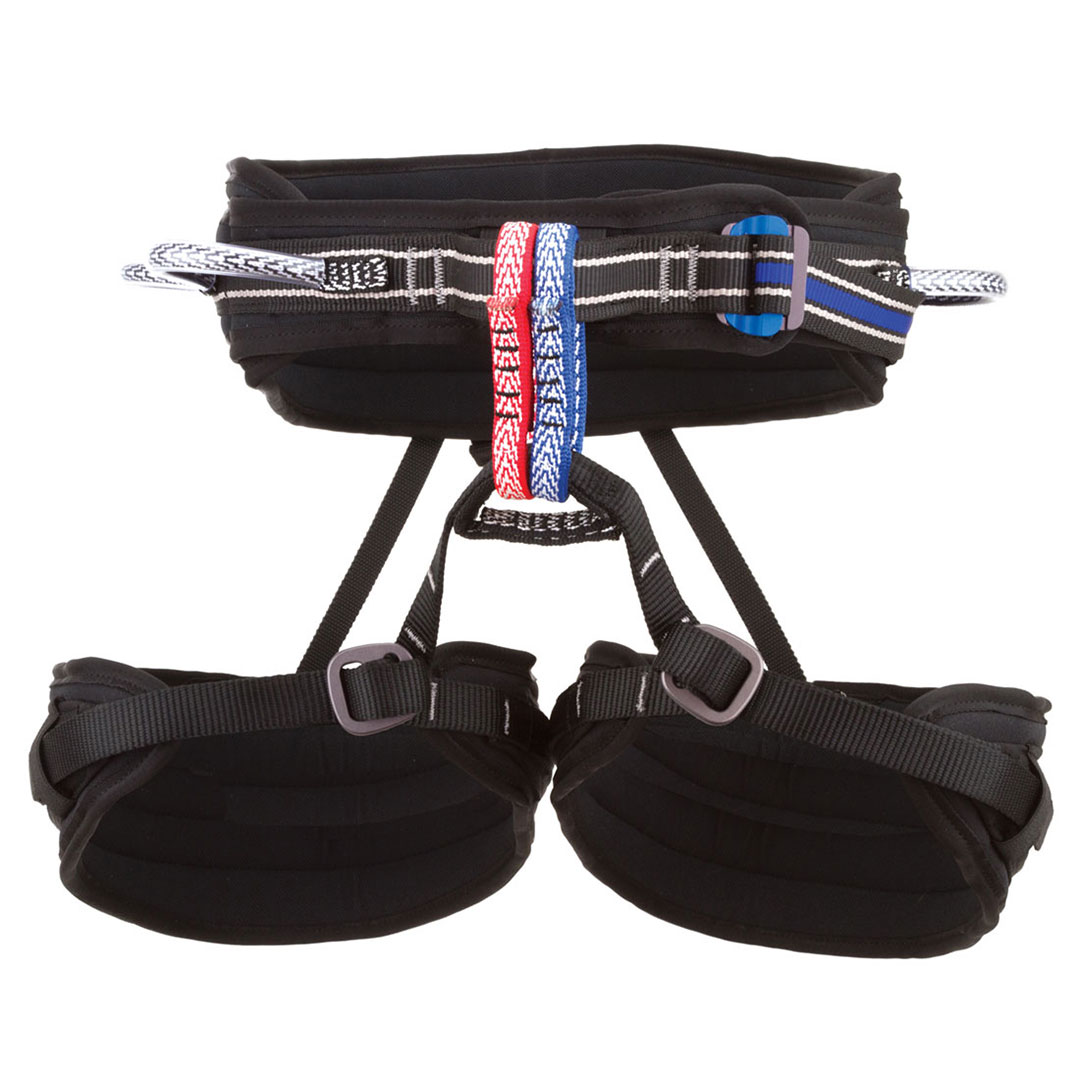
Harnesses: Sit, Chest, Full-Body
For routesetters spending hours in a vertical workspace, a comfortable harness is critical. Sport harnesses quickly become uncomfortable and restrictive when weighted, and they are far from ideal in a work scenario. Many routesetters who regularly set routes opt for a big wall harness that allows them to forerun and make tweaks comfortably. The most common big wall harnesses used by routesetters are Metolius’ Safe Tech Waldo and Black Diamond’s Big Gun. Both harnesses sport two belay loops, ideal for positioning while suspended. The Waldo also features gear loops that are full strength, making it possible to attach buckets of tweak holds during forerunning (which should never be done with non-rated gear loops).
Where to Buy:
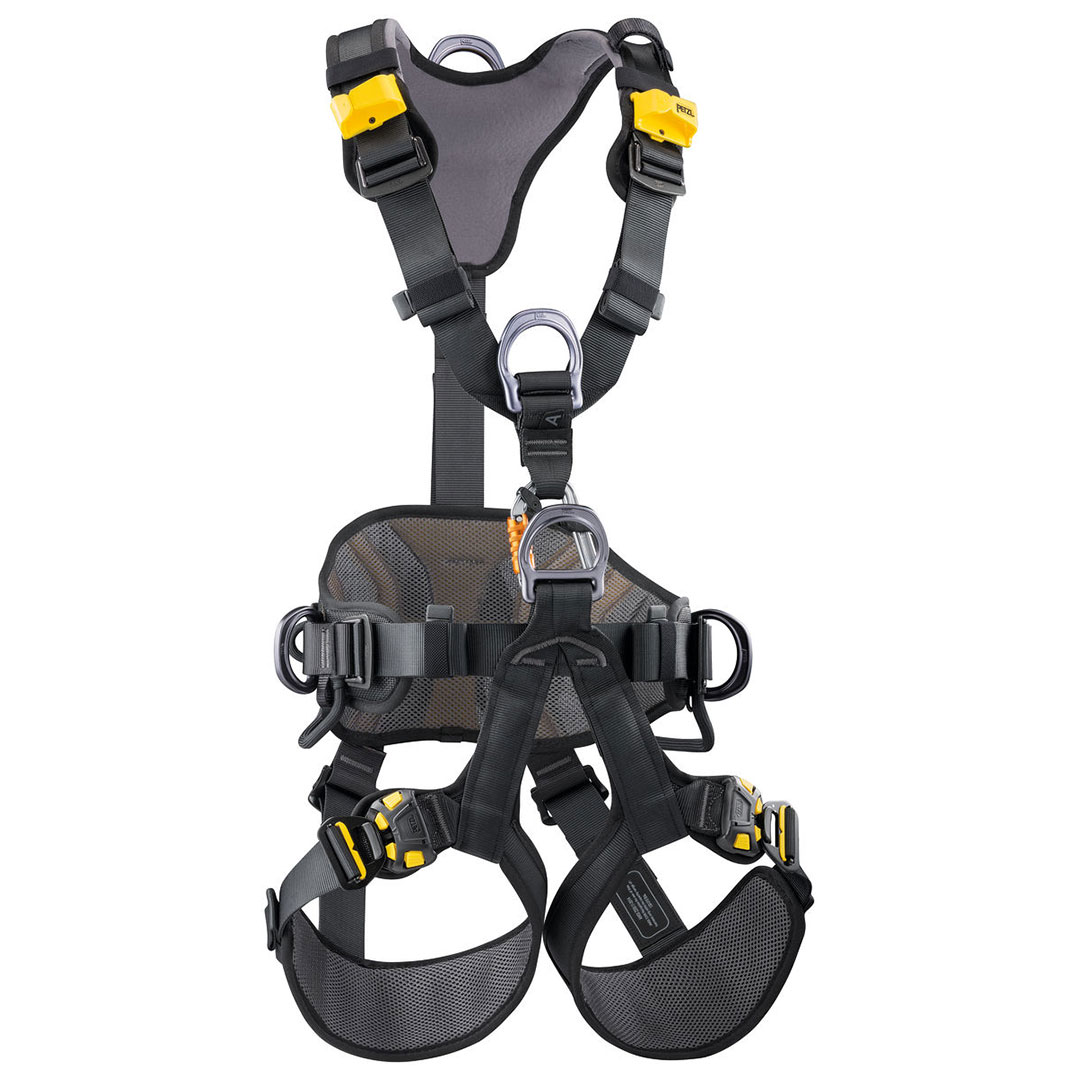
As the industry expands, many gyms are adopting rope access techniques from industrial climbing in order to provide setters with a safer workplace. In addition to utilizing a fall arrest system (which I will cover in more depth later), best practices include wearing a full-body harness while setting. For these harnesses, setters have a few options. A chest harness such as the Petzl CHEST’AIR can be combined with a seat harness in order to create a fall arrest harness, allowing a setter to work in their big wall harness without forgoing the protection of a fall arrest device. Petzl also makes several complete full-body harnesses. The AVAO provides a single central point tie-in for suspension on a work line, as well as both a sternal and dorsal point for fall arrest. The ASTRO provides multiple central point tie-in points, convenient for separating a descender from positioning devices, but the ASTRO full-body harness also has an integrated KROLL chest ascender, which is not useful for most routesetters. We can get the best of both worlds, however, by combining the ASTRO Sit harness with one of Petzl’s chest harnesses. Edelrid also now sports a complete professional line of work harnesses, with similar options in sit, chest and full-body configurations.
Where to Buy:
- Petzl CHEST AIR Chest Harness
- Petzl AVAO Full-Body Harness
- Petzl ASTRO Full-Body Harness
- Edelrid Work Harnesses
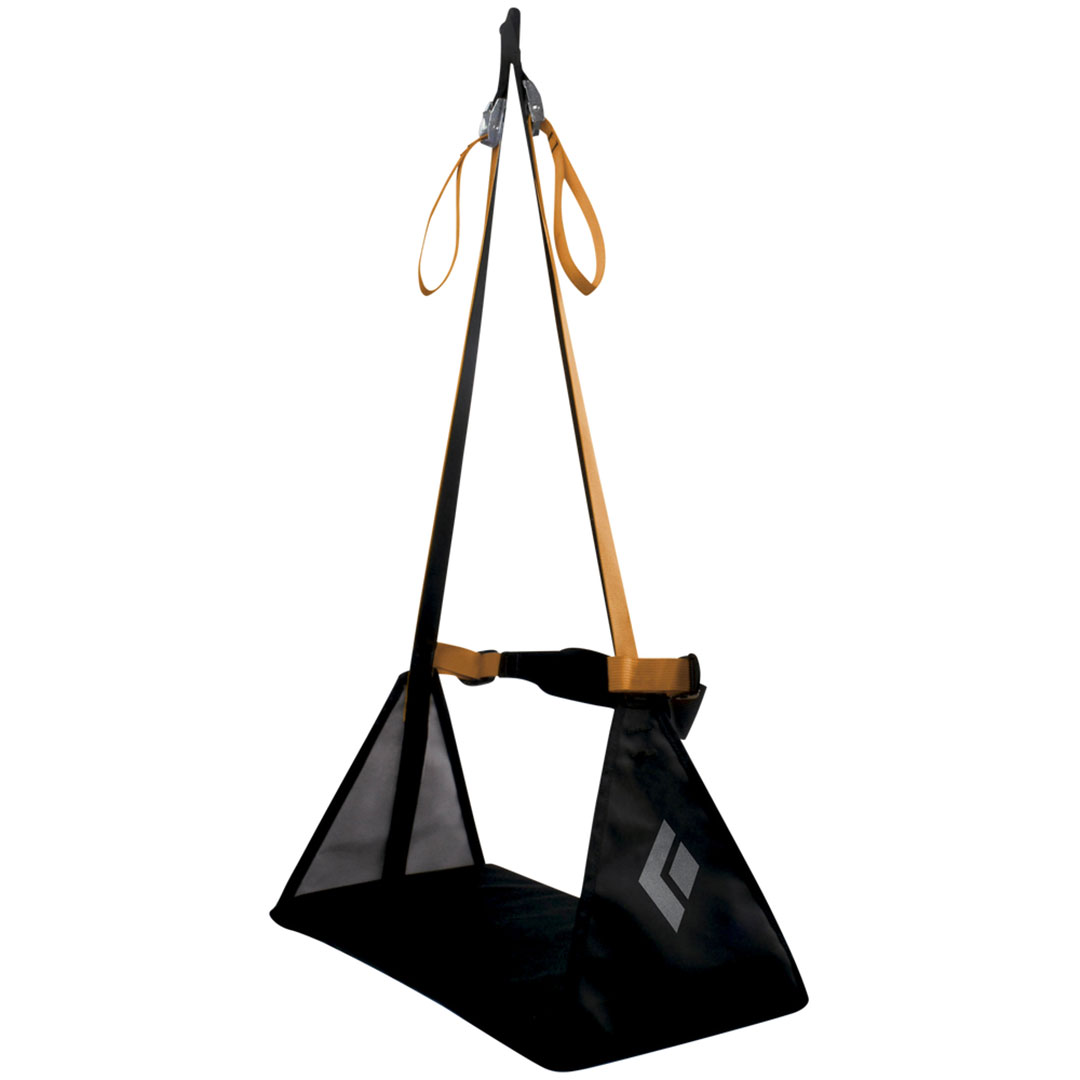
Bosun’s Chair
An increasingly emphasized addition to a rope routesetter’s kit over the years, a bosun’s chair makes sitting in a harness for a few hours significantly easier on a routesetter’s body. These chairs are essentially a system that includes an actual flat seat to take your weight—the BD Bosun’s Chair or the Petzl Podium are two options. The Petzl Podium can be integrated into a system with a Petzl harness, and the BD Bosun’s Chair can be used with your ascenders and regular harness to create a setting chair that holds your weight while your harness backs you up. No matter what system you use, make sure you have proper training on the setup and are always tied in directly!
Where to Buy:
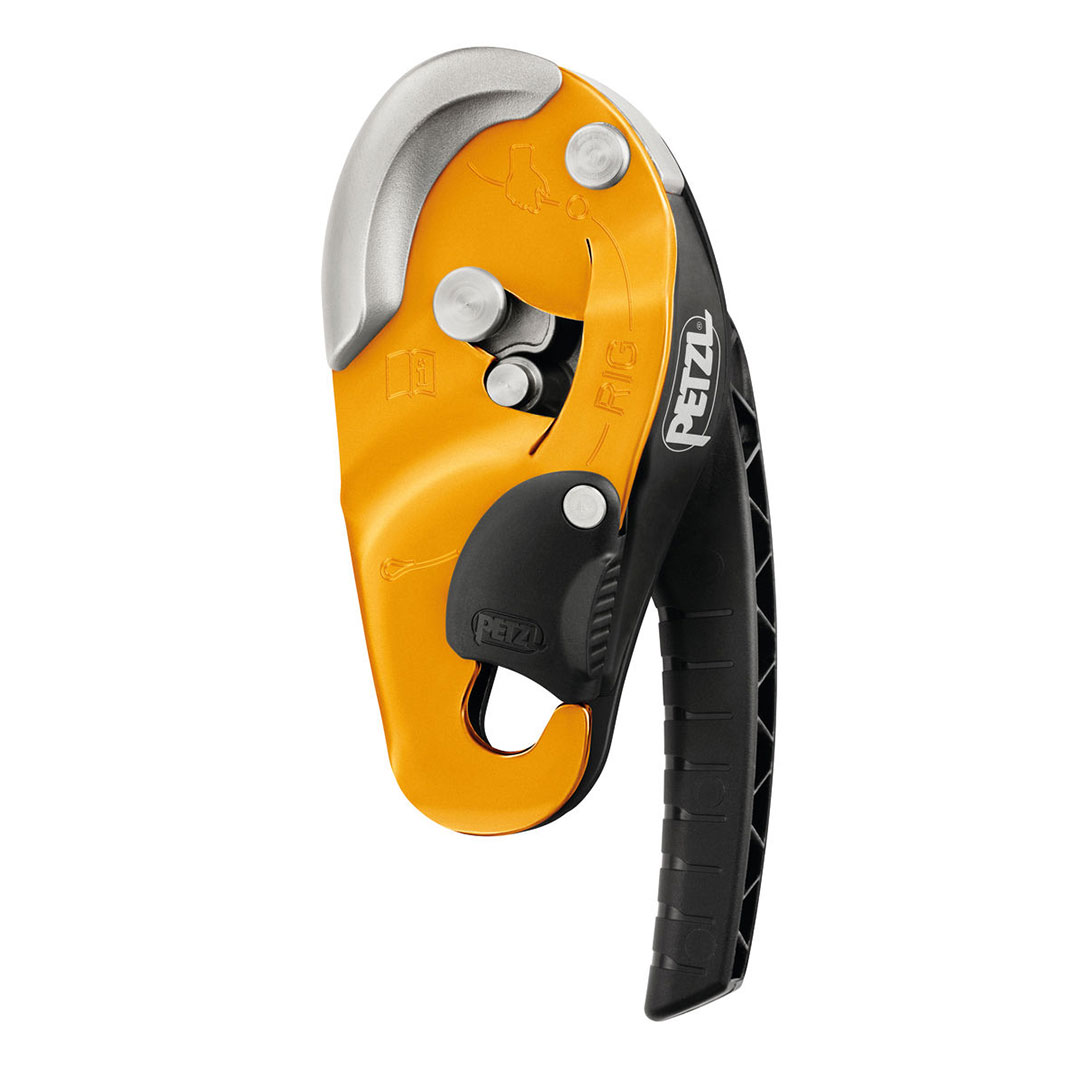
Descender
While many of us have worked suspended on a GRIGRI (Petzl’s assisted braking device), we all know it is not designed to be utilized as a hands-free device. Many of us spent years tying catastrophe knots below us in case of failure. Fortunately, better options are becoming standard practice across the industry. The most commonly used descender is Petzl’s RIG. Resembling an overgrown GriGri, the RIG offers several features that make it an ideal tool for routesetters. First and foremost, the RIG offers an AUTO-LOCK feature which allows routesetters to work in a braked position hands-free. (Older models require the setter to move the brake handle to the locked position before going hands-free.) Additionally, the loading gate can be opened without manipulating the connecting carabiner, making it possible for a setter to transfer ropes without detaching the RIG from their harness.
Where to Buy: Petzl Rig Descender
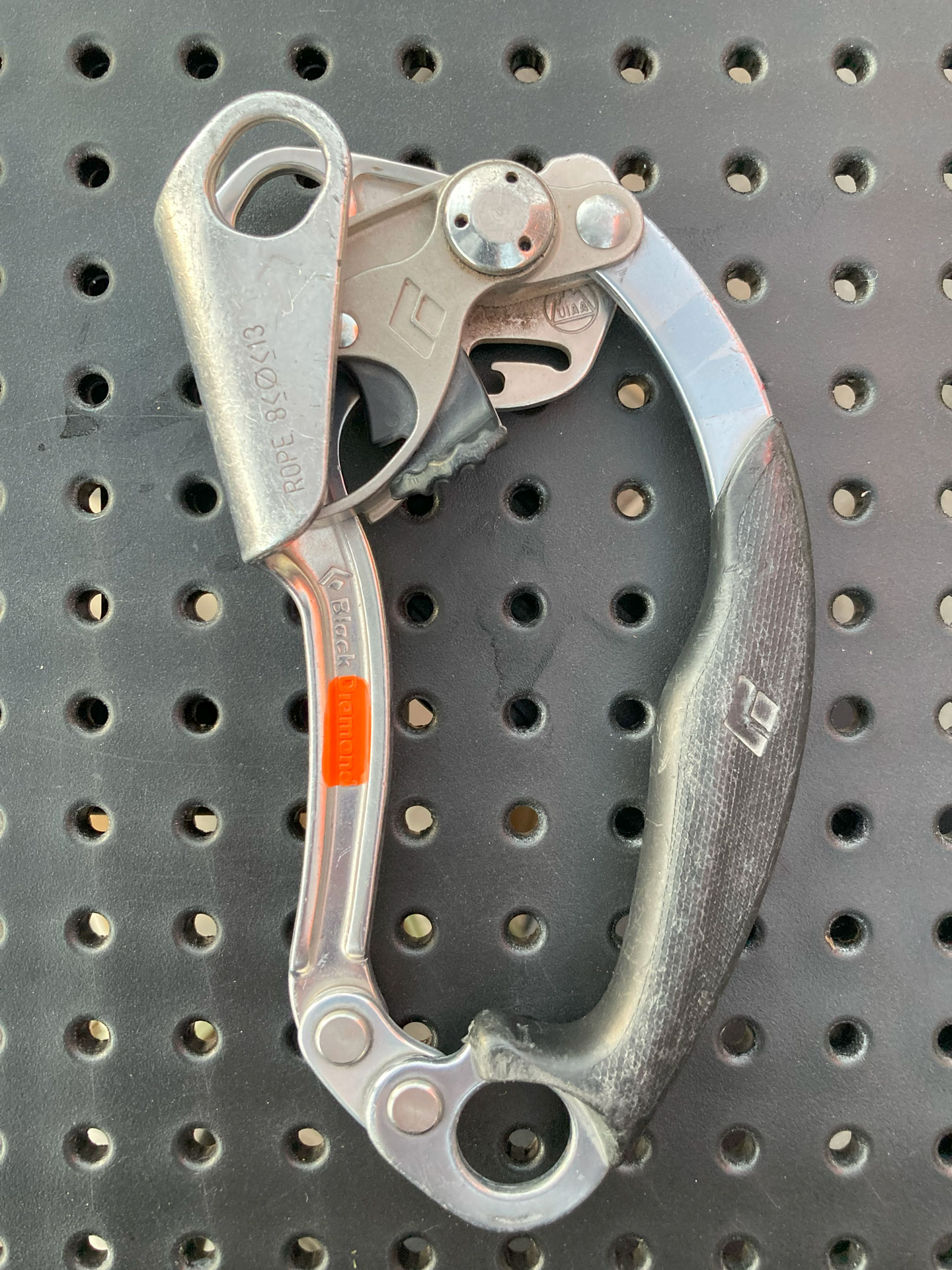
Ascender
As their name suggests, ascenders are camming devices that allow setters to ascend a fixed rope. While they exist in a number of forms across rope access industries, routesetters most often use a handheld version (aka a jumar) that attaches to the rope above us, giving us a handle to pull on in order to move upward and an easy thumb release when we need to move down. While foot and chest ascenders are extremely efficient for rope access professionals who need to move in a singular direction, they are less than ideal for routesetters, who regularly switch between ascending and descending. A complete rope setting kit should have two ascenders: one for the routesetter and one for their haul system. Handheld ascenders are designed for the left or right hand, and you can use either for either hand, but they’re definitely more comfortable for the hand they’re designed for. I personally recommend getting one of each, and using your dominant side for your suspension system and the non-dominant side ascender for your haul system.
Where to Buy:
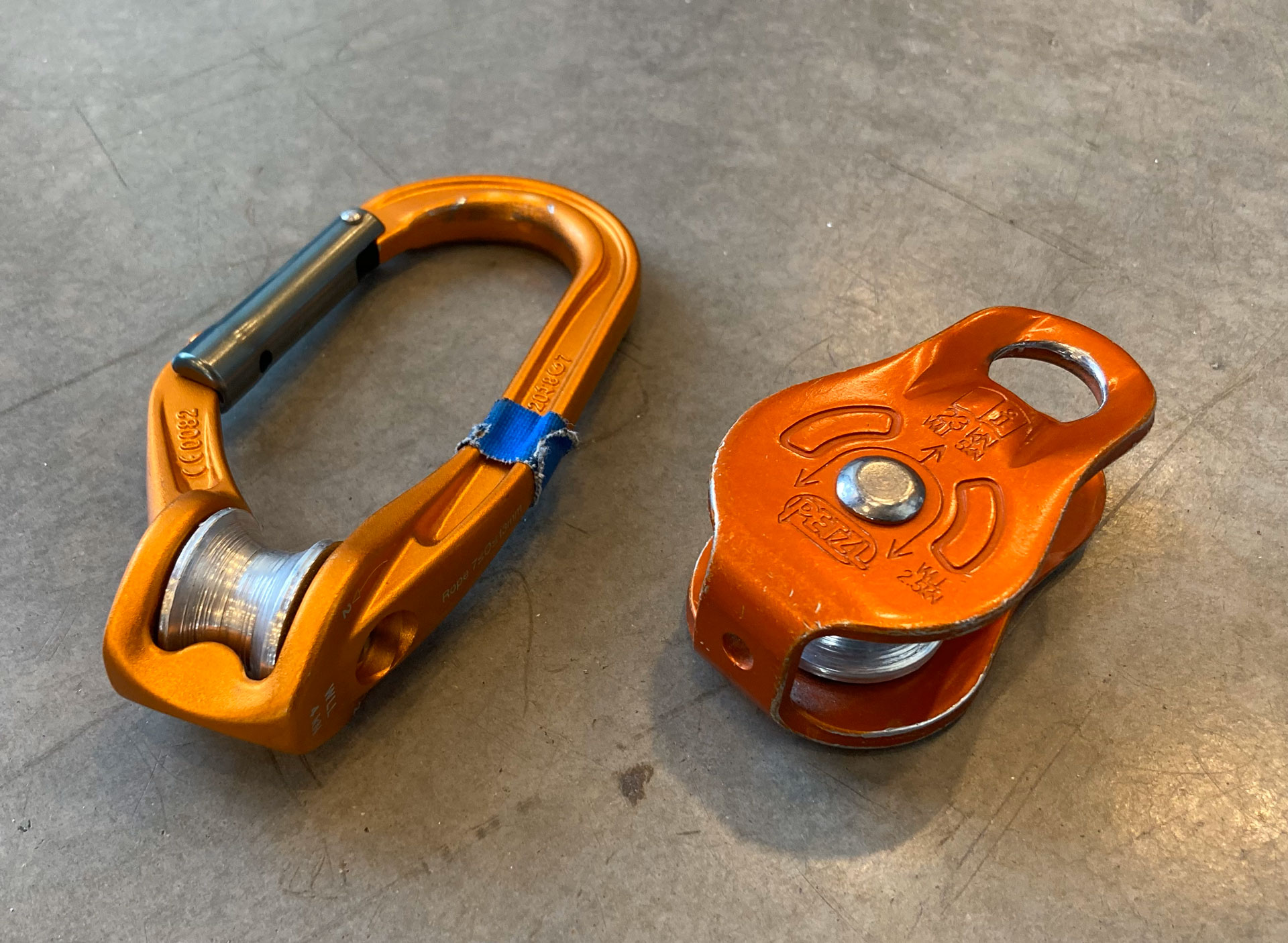
Pulleys
While pulleys can seem like an unnecessary accessory, the mechanical advantage they provide can both expedite the setting process and promote career longevity by reducing wear and tear on a routesetter’s body. By attaching a pulley to their ascender, a routesetter can pull slack out of their descender with an ergonomic downward motion. While some teams use a carabiner to similarly redirect their descender brake line, a pulley reduces friction, making the system more efficient. When movements are repeated hundreds of times over the course of a workday, any efficiency adds up quickly. There are plenty of options to choose from depending on a setter’s preference, from fixed pulleys to systems that are integrated into a carabiner, such as the PETZL Rollclip Z.
Where to Buy:
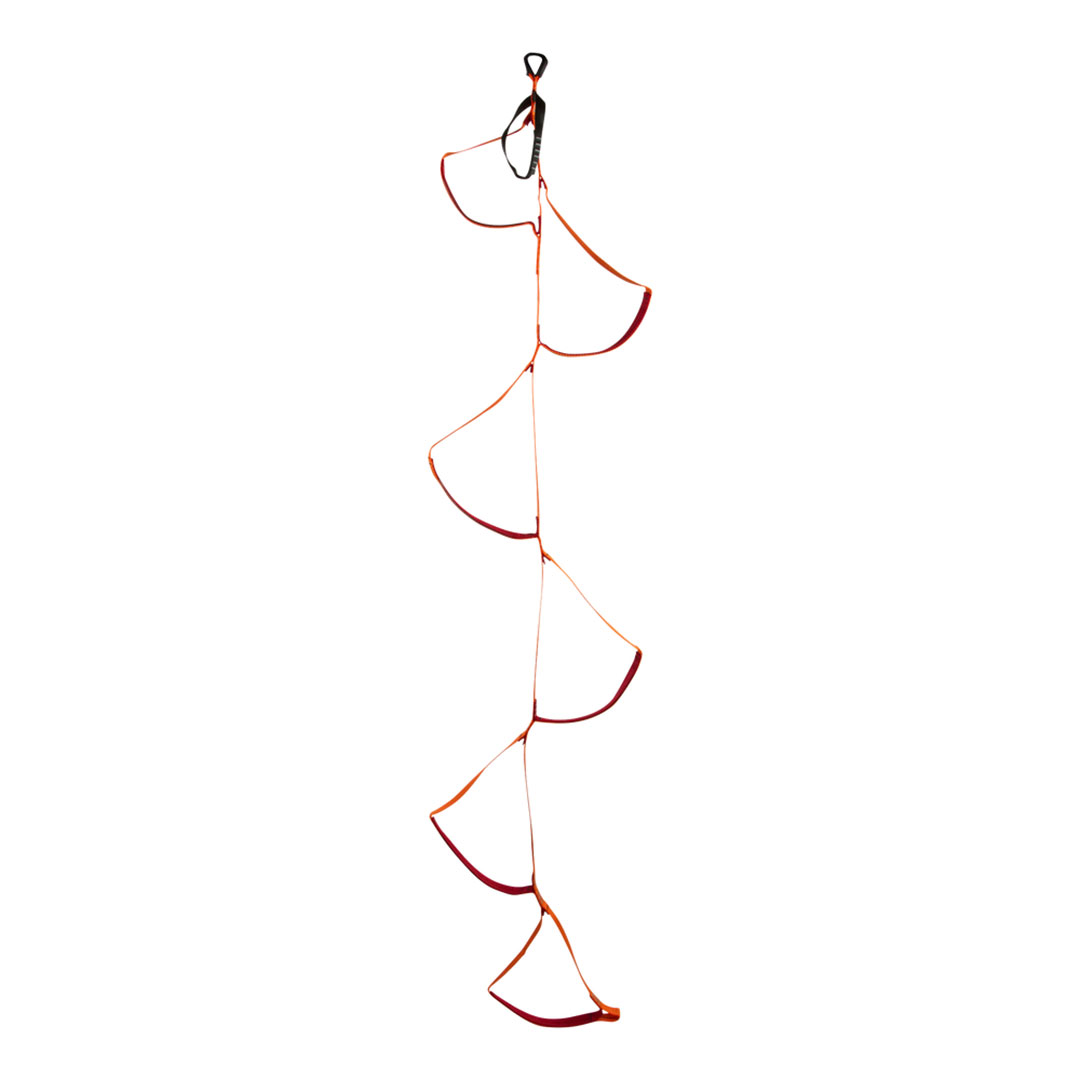
Etrier
This French word refers to a portable ladder, and it’s a step or steps made of webbing that attach to an ascender to allow setters to stand as they ascend the rope. For setting you really only need one step or maybe two, and in most cases one adjustable step gets the job done in a small package. Metolius makes both a single-step adjustable aider called an Easy Aider and a lightweight multi-step aider called a Pocket Aider, both of which pack into small pouches for easy travel. Petzl’s single-step adjustable option, the FOOTAPE, is also a popular choice. For those wanting a traditional ladder with more steps, Black Diamond makes a six-step Etrier and a lightweight Alpine Aider.
Where to Buy:
- Metolius Aiders (Easy Aider, Pocket Aider)
- Petzl FOOTAPE
- Black Diamond Etrier
- Black Diamond Alpine Aider
POSITIONING DEVICES
Now that we’ve covered moving up and down a rope system, let’s look at the devices that allow setters to move laterally across walls. Whether navigating steep overhangs or a wandering route, setters use an array of positioning systems to tether themselves and their holds in their workspace.
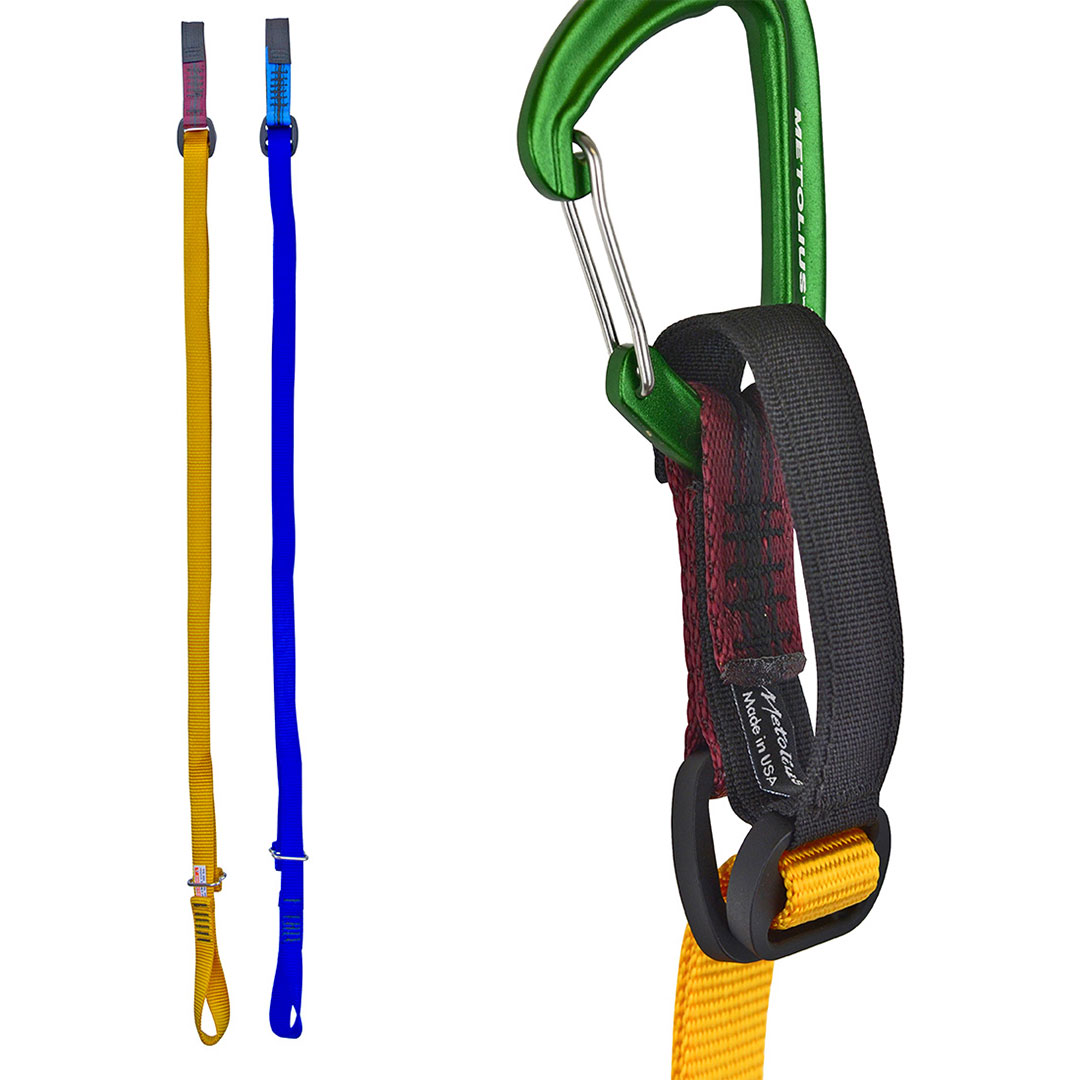
Positioning Lanyards
Positioning lanyards and personal anchor systems (PAS’s) help setters to both position themselves laterally and anchor themselves to the wall. These can come in a variety of forms, but they are usually adjustable, allowing a setter to control their distance from the wall while remaining connected to their suspension system. Two popular options are Metolius’ Easy Daisy and Petzl’s PROGRESS ADJUST. The PROGRESS ADJUST is an update on the CONNECT ADJUST and provides a more ergonomic release handle, but it still has the downside of needing to be unweighted in order to be released. Working with two adjustable devices helps setters control their way back and forth across the wall, although some setters prefer the more advanced GRILLON (below).
Where to Buy:
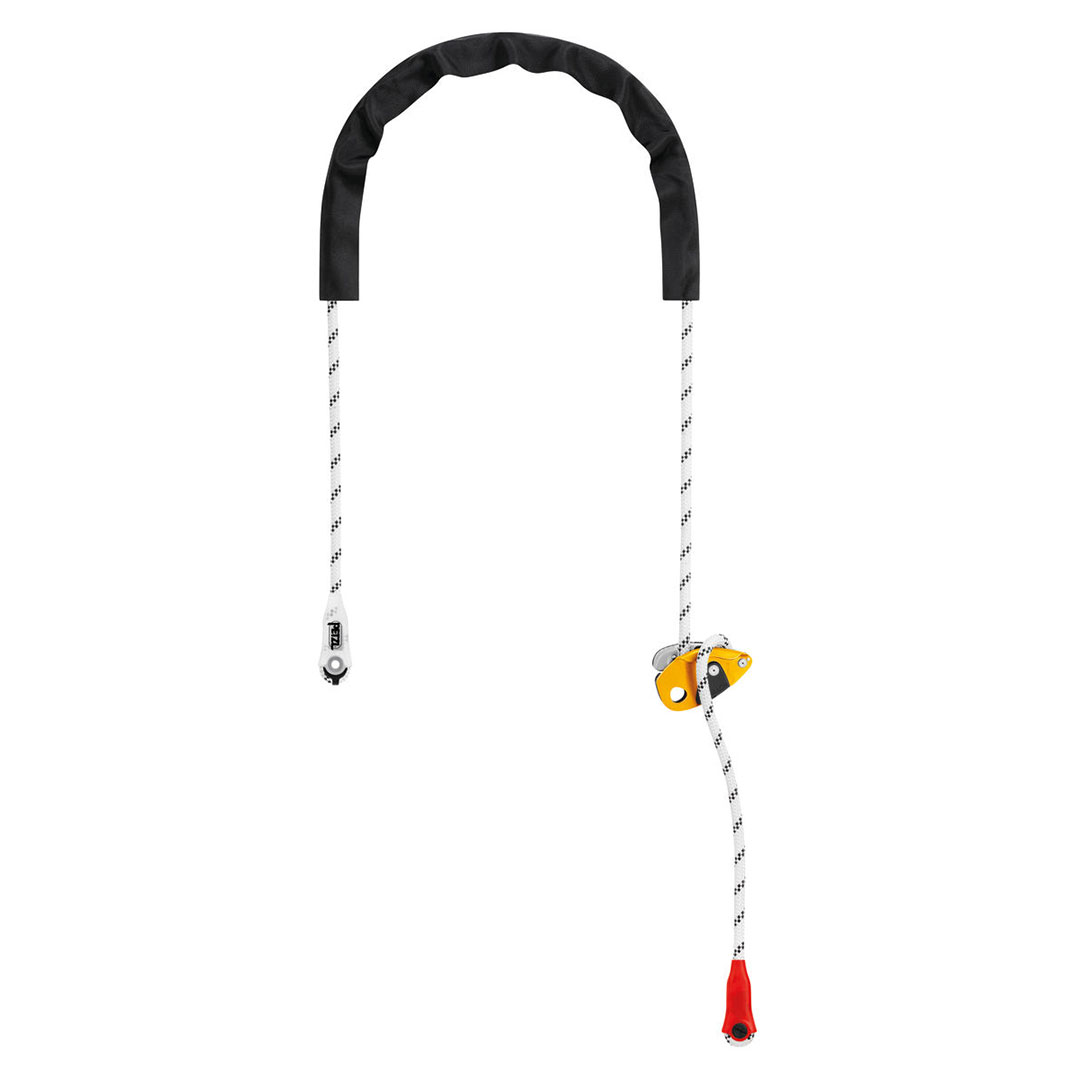
GRILLON
A more robust positioning device, Petzl’s GRILLON has the advantage of a levered release system similar to the GRIGRI, allowing for a smooth release without needing to unweight the system. The GRILLON also has a protective sheath, allowing it to be used to wrap around beams and scaffolding as we work behind the wall. It can be outfitted with either carabiners or lobster claws. Its longer length and larger profile, while making it ideal for steep overhangs and behind-the-wall access, can make it unwieldy to climb with, so most setters use it in conjunction with another positioning device—ideally something smaller that gives closer access to the wall, such as a PROGRESS ADJUST.
Where to Buy: Petzl GRILLON
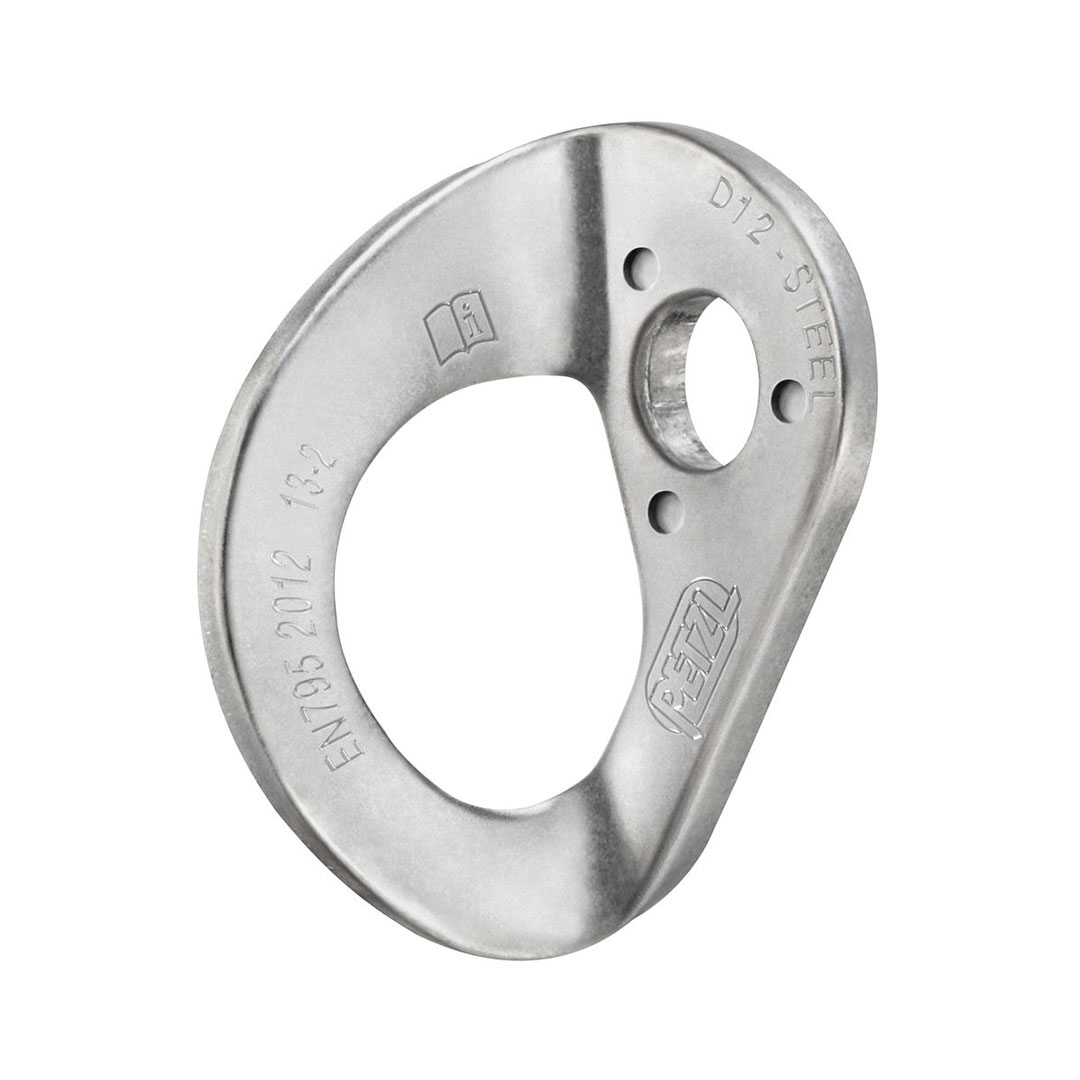
Hangers
In order to position themselves on a wall, setters need something on the wall to clip their PAS to. Quickdraws and their hangers are perfect when already installed on the wall, but when not, setters must affix one. Metolius, Edelrid and Petzl all make a hanger that is EN 959 compliant. It is to be noted, however, that a hanger attached to a T-nut for positioning purposes is not suitable for taking falls or hauling excessive loads. You’ll also want to secure the bolt in the hanger to prevent dropping it when it’s not in use.
Where to Buy:
FALL ARREST SYSTEM
A relatively new development in professional routesetting is the introduction of a fall arrest system in addition to our suspension system. Adding a backup in case of a main line failure, these dual-rope systems have been standard practice in other rope access professions and are becoming increasingly common in gyms as an additional safety measure for those of us working at height. Here are the components you’ll need to set up a dual-rope system, based on Climbing Wall Association Work at Height recommendations.
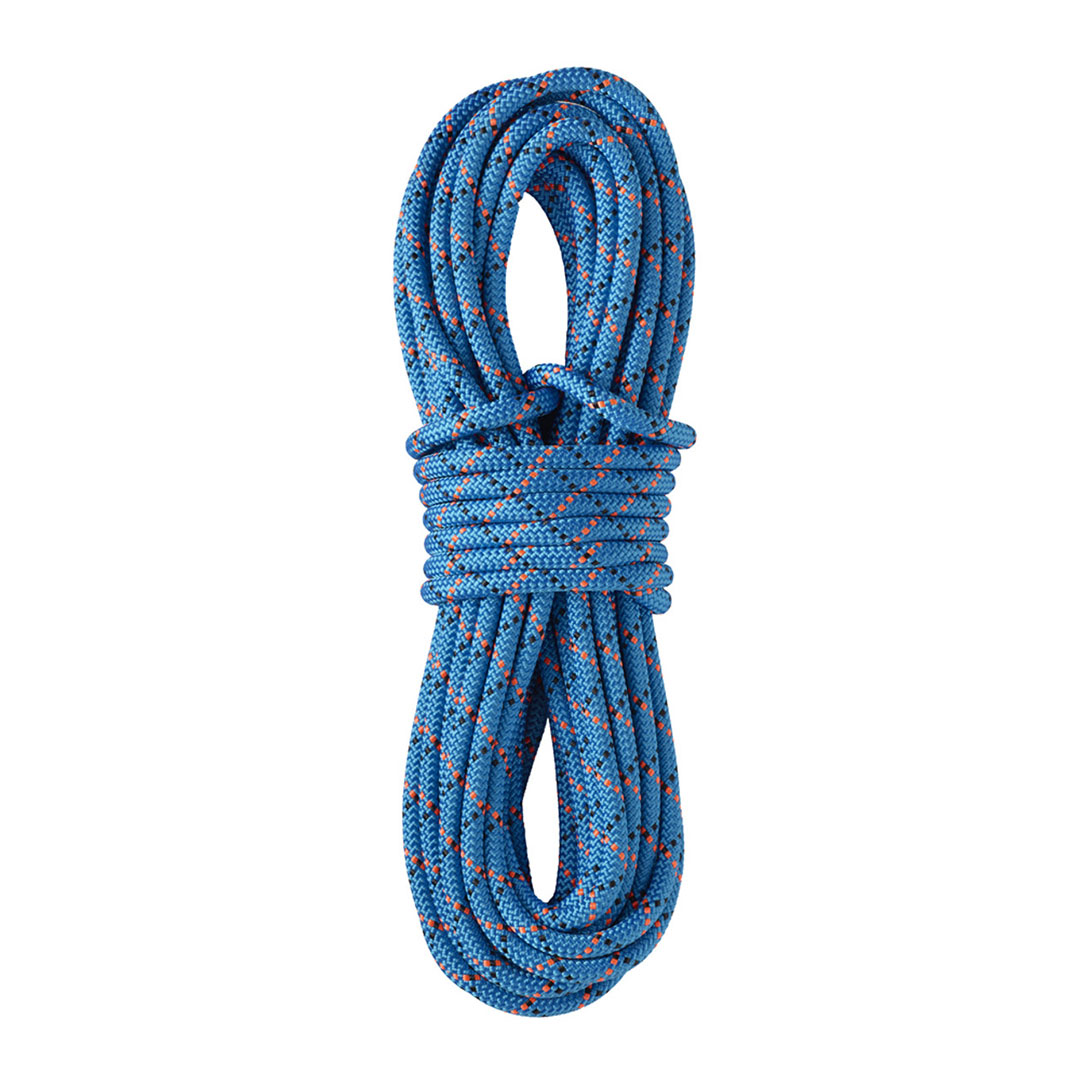
Static Lines
While the practicality of using an existing semi-static top rope for all of our work lines can be appealing, fall arrest systems are designed to be used on static ropes measuring 11mm-13mm.
Where to Buy:
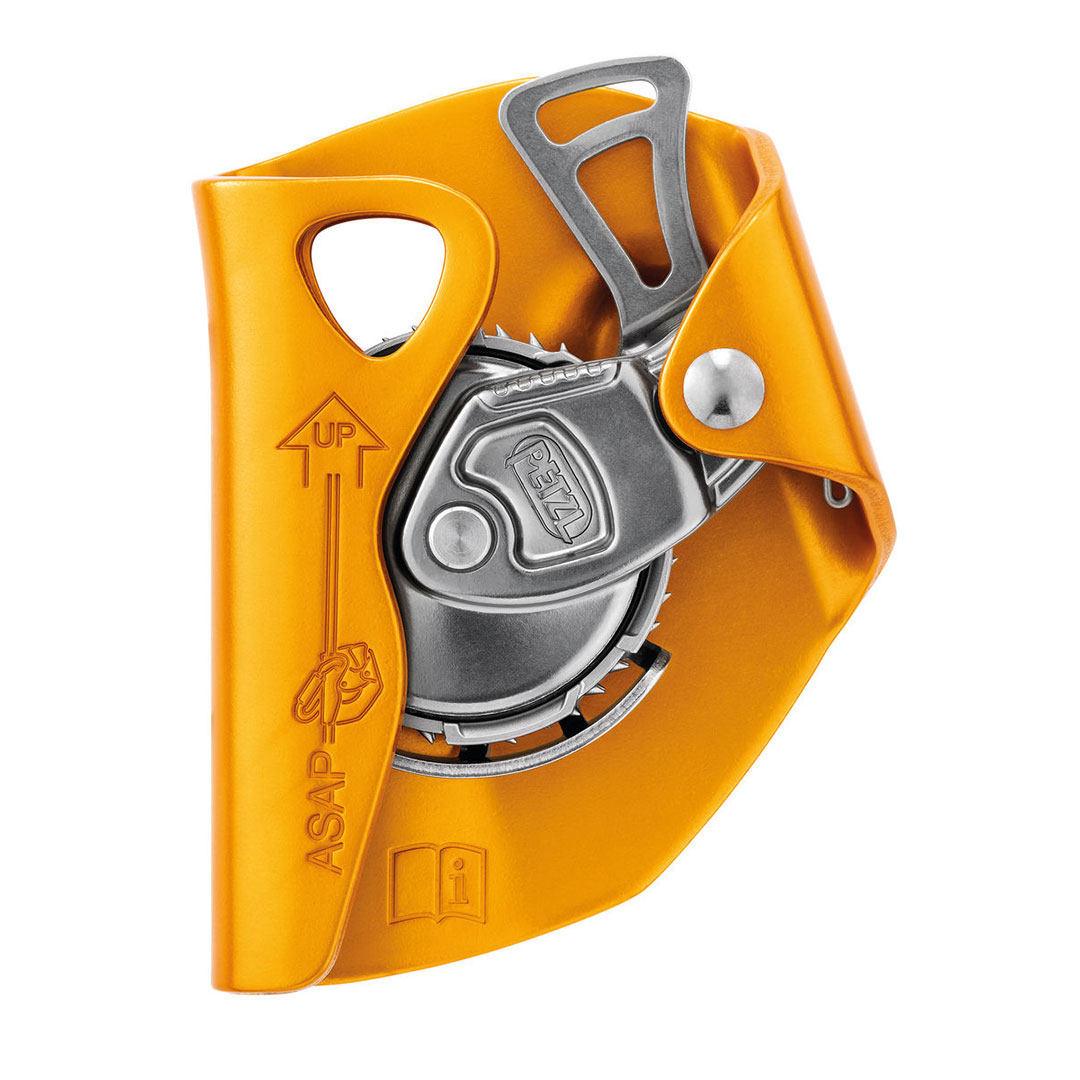
Fall Arrester
A fall arrester is a piece of equipment that moves freely up and down a rope with a routesetter, providing backup in case of catastrophe analogous to a seatbelt. In the case of an uncontrolled descent, a centrifugal brake system engages to stop the fall. The current industry standard is Petzl’s ASAP, although Edelrid will be releasing a new fall arrest device later in 2023, called the FUSE.
Where to Buy:
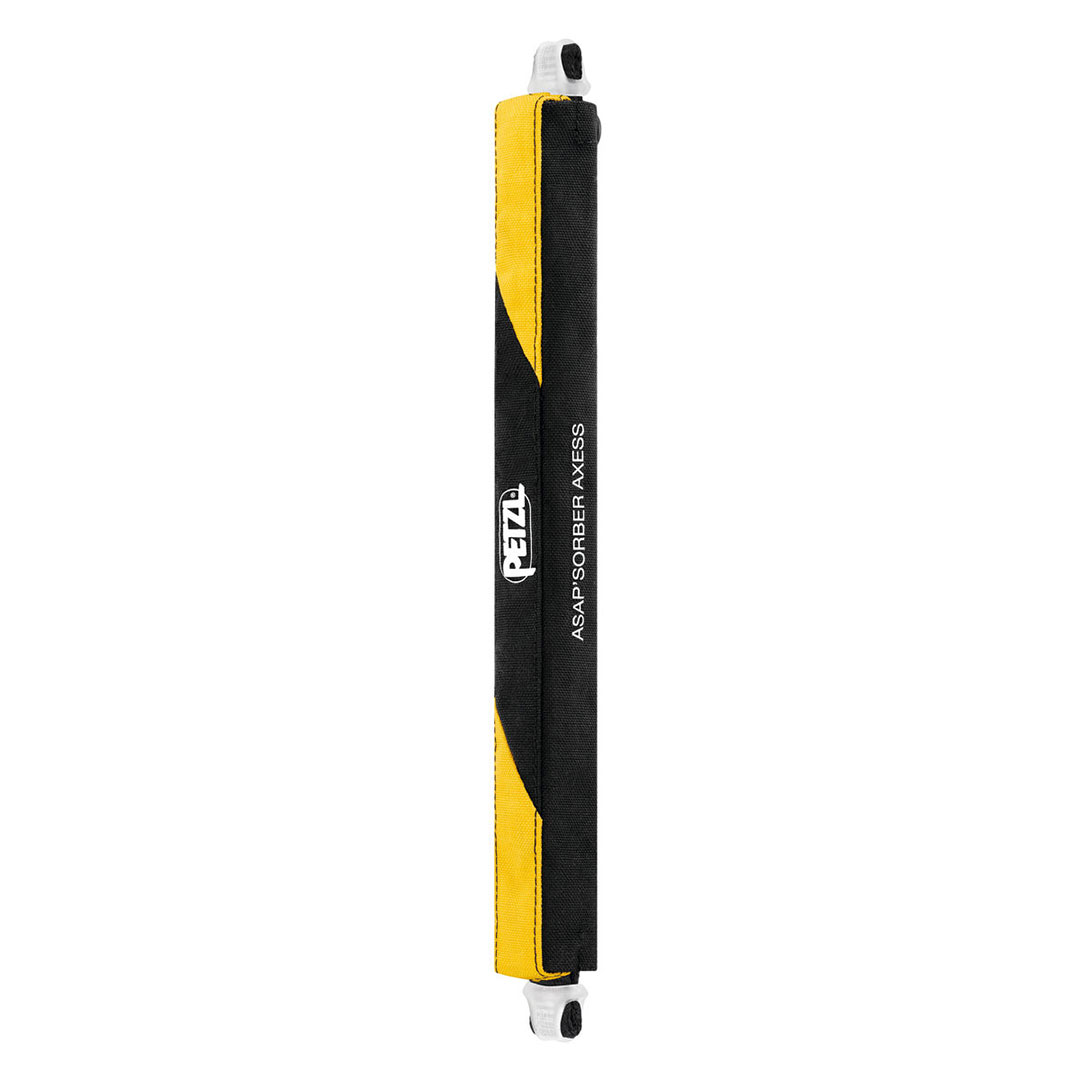
Energy Absorber
In the case of a catastrophic failure resulting in the deployment of a fall arrest device, significant force factors come into play. While a Factor 2 fall is functionally impossible for most gym climbers, it is a real possibility for routesetters, who may fall onto a static line system from above their fall arrest device. For this reason, all fall arrest devices are used in conjunction with an energy absorber. These single-use devices deploy in the case of a catastrophic fall to absorb the energy created by the force of a setter falling, much in the way that a dynamic rope cushions a lead fall. These energy absorbers are also needed for worker safety in static work environments at height; for example, when setting off a lift, a setter must use energy-absorbing lanyards for their personal safety system.
Where to Buy: Petzl ASAP’SORBER AXESS
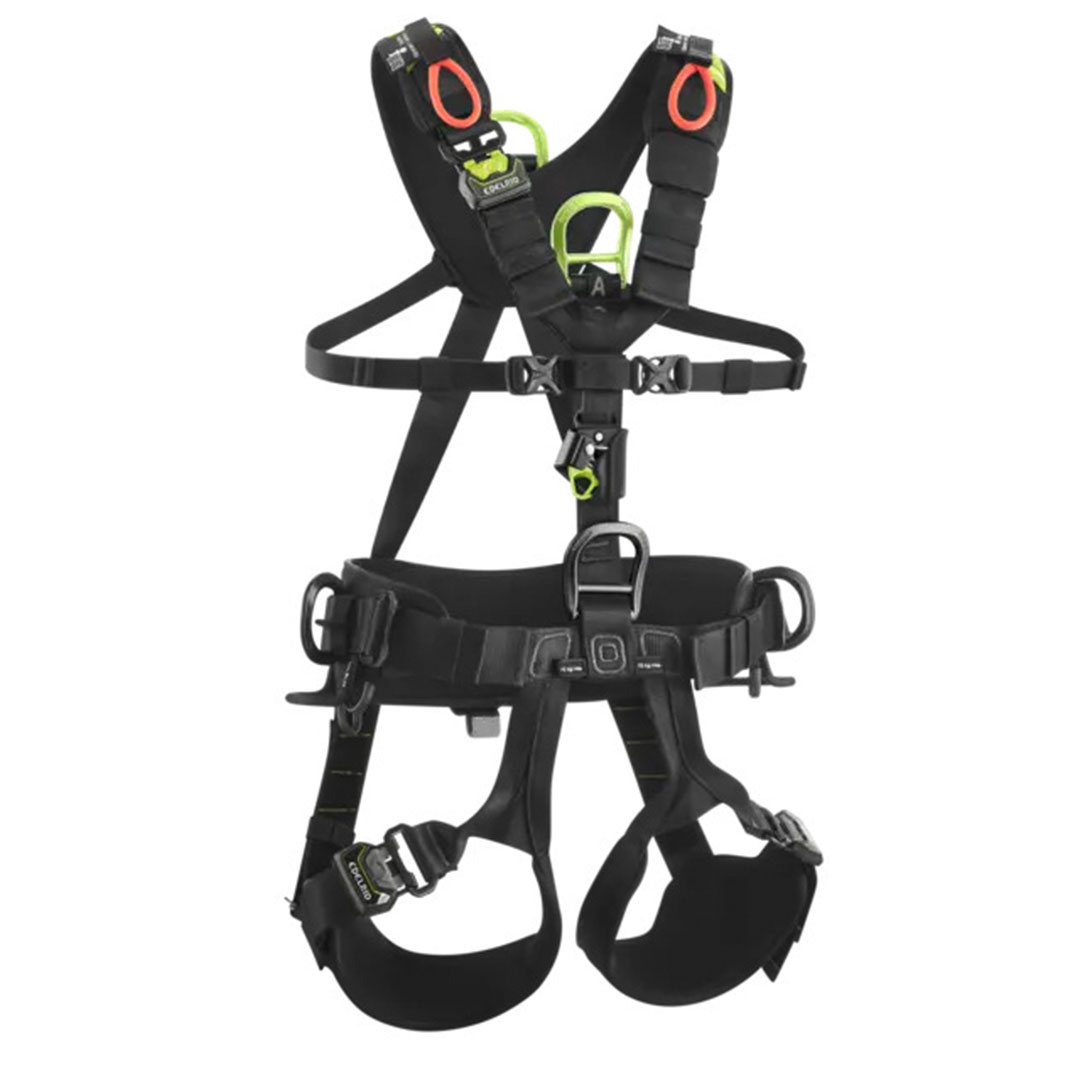
Fall Arrest Harness
As we noted earlier, implementing rope access practices that utilize a fall arrest system means using full-body harnesses while working. Fall arrest systems CANNOT be used with a sit harness unless it is paired with an appropriate chest harness. The forces generated by a Factor 2 fall, if not distributed properly, can lead to serious injury. The sternal or dorsal attachment points on a chest or full-body harness are designed to distribute force along the spine in a less catastrophic manner.
Where to Buy:
HAULING
Now that we’ve gotten ourselves moving up and down the wall, we need to get our holds and hardware off the ground. While each setter has their preferred setup for a hauling system, most setters will use a combination of buckets and pulleys in order to gain mechanical advantage.
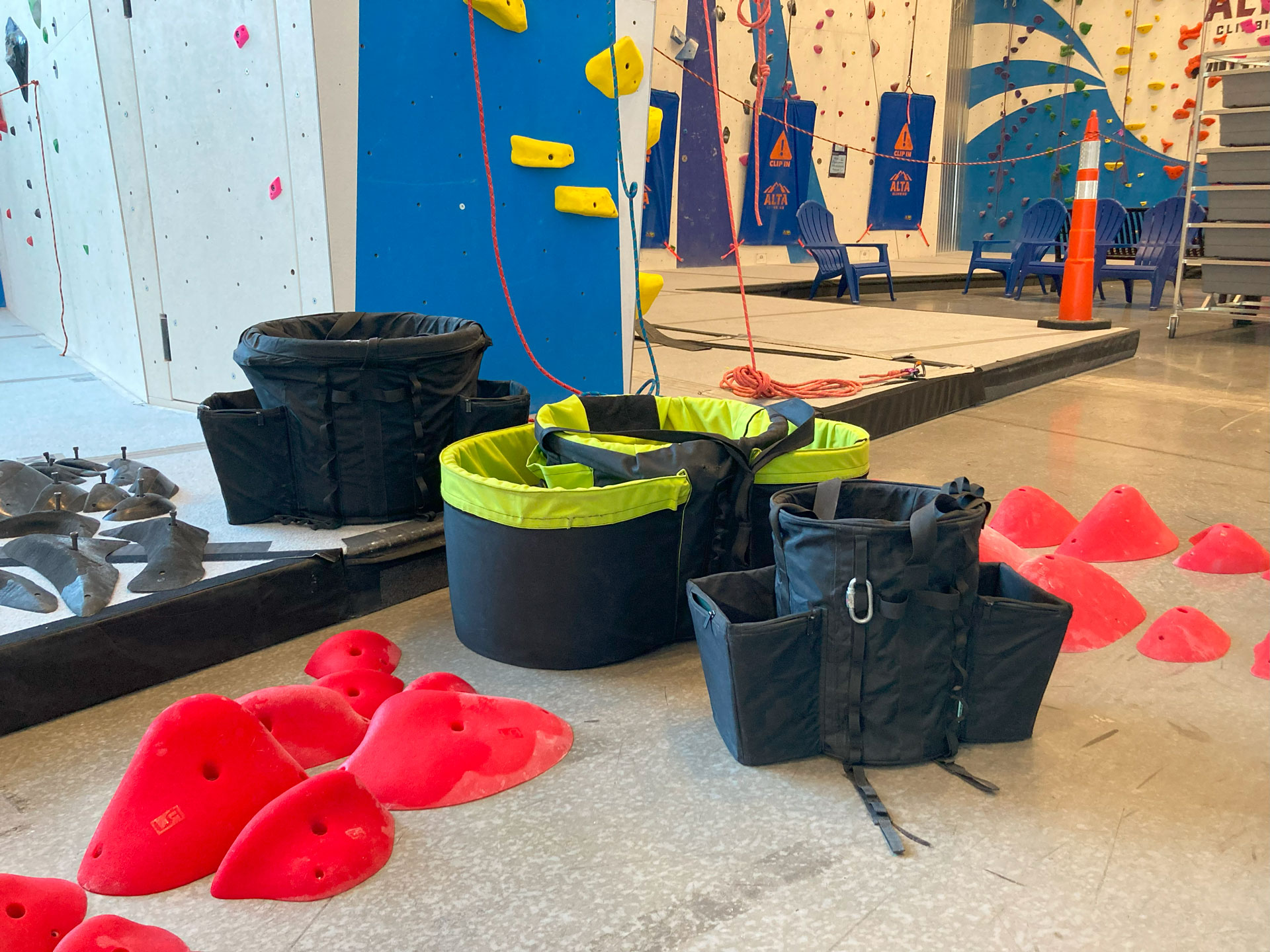
Hold Buckets
As walls get taller and holds get bigger, routesetters have moved away from 5-gallon Home Depot buckets toward systems specifically designed to meet the needs of the evolving climbing industry. Gyms building out a setting department should plan for several buckets of varying sizes for each setter’s rope setting system. Flashed and So iLL both make sewn bucket covers at 5 and 17 gallons, equipped with webbing perfect for attaching gear and volumes. The Flashed bucket has the advantage of massive side compartments, but it can be unwieldy for smaller setters due to length of the attachment straps. The So iLL bucket provides easier access for smaller setters, but the side compartments are smaller and less sturdy. Other companies, including Organic and Escape, make multi-pocket 5-gallon bucket covers. There are also soft strong buckets available from other work-at-height industries—if you choose these options, make sure they have a rigid mouth and base or they will collapse around the holds inside and be annoying to use. In Europe, it is not uncommon to use strong rectangular post-boxes rigged with ropes and webbing. Whatever you choose, make sure the bucket and its handle/connection system is properly rated for the weight you are going to put in it and the ways you are going to be moving it around the wall.
Where to Buy:
- Flashed Bucket Cover (10-gallon)
- Flashed Bucket Cover (19-gallon)
- So iLL Bucket Cover (5-gallon)
- So iLL Bucket Cover (17.5-gallon)
- Organic Climbing Bucket Cover (5-gallon)
- Escape Bucket Cover (5-gallon)
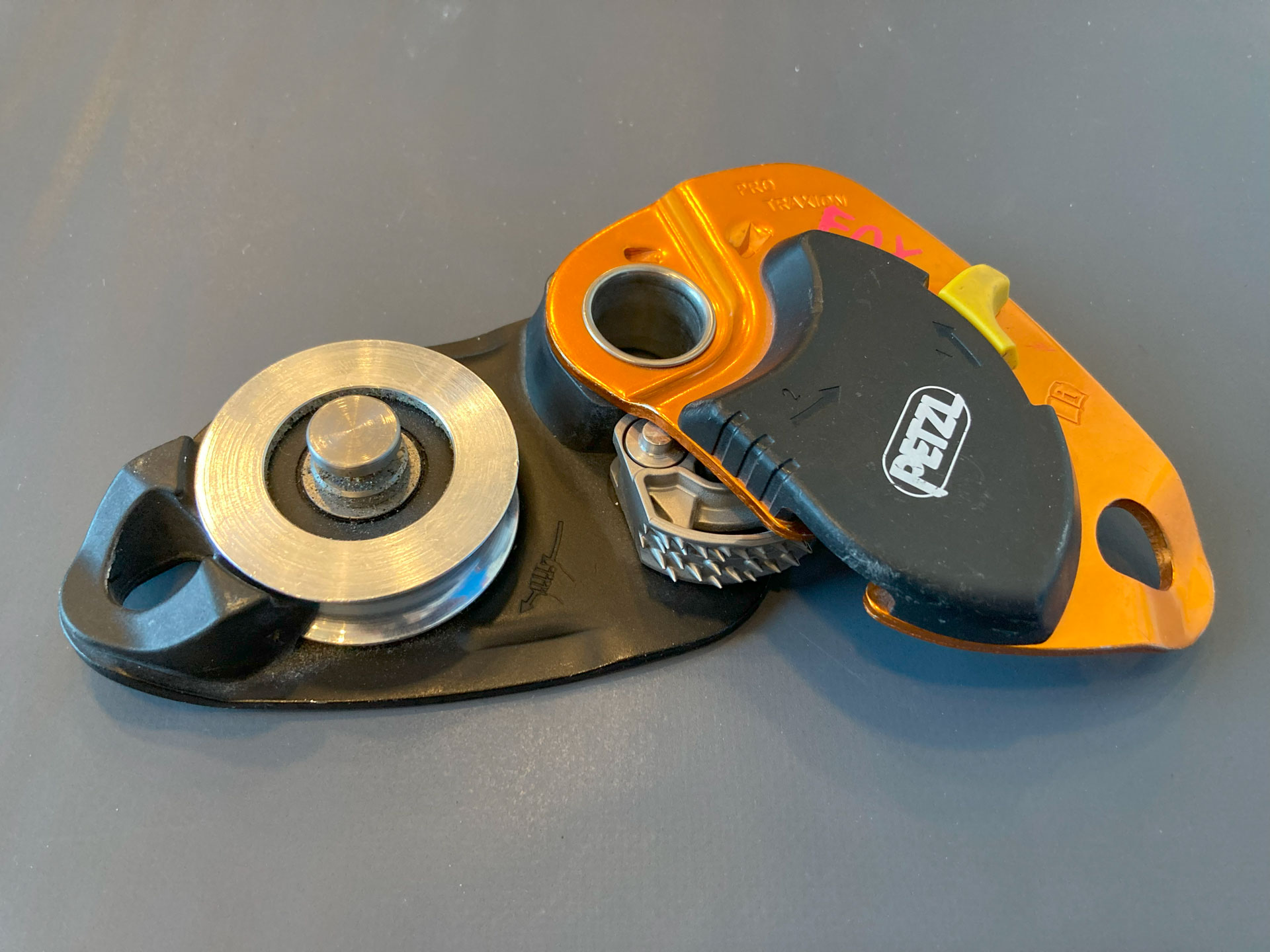
Progress-Capture Pulley
When moving large buckets of heavy holds up a wall, mechanical advantage is a routesetter’s best friend. By combining the ascenders and pulleys we’ve already discussed, routesetters can easily create a 2:1 pulley system in order to haul their hold bucket. All the mechanical advantage in the world doesn’t matter, though, if we aren’t using the right device to keep our bucket in place. A GRIGRI, while for some setters the only option available, is not only not rated to hold a load suspended hands-free, but also introduces friction into the system, thereby decreasing the efficiency of that system. A much better tool is a progress-capture pulley, such as PETZL’s PRO TRAXION or MICRO TRAXION. Both devices will capture the rope as you haul, while also functioning as an efficient part of the pulley system.
Where to Buy:
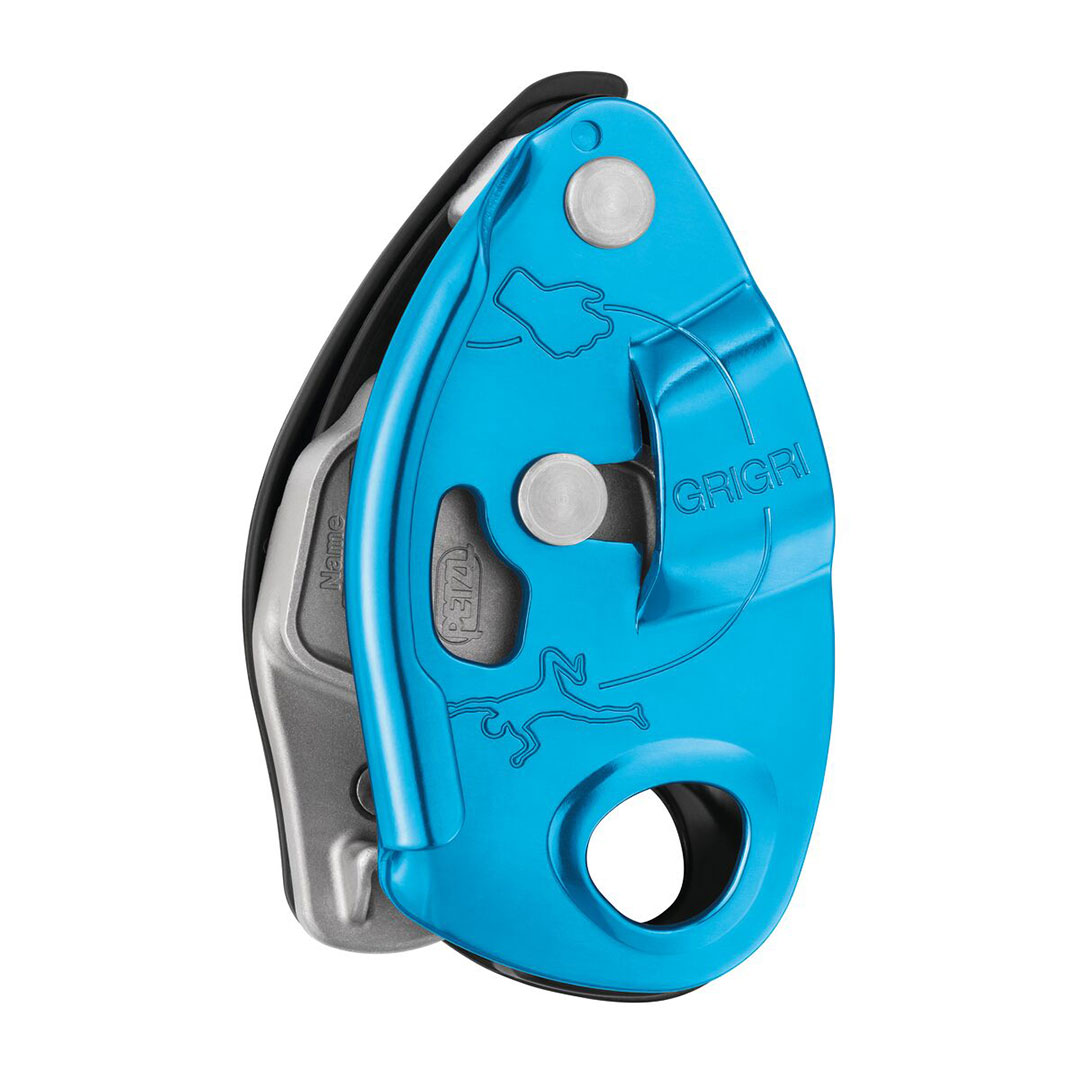
ASSISTED-BRAKING BELAY DEVICE
While most setters are moving away from working on a GRIGRI on their suspension line, the device remains an invaluable tool for any rope setter. Beyond their intended use within sport climbing, assisted-braking belay devices are useful for lowering heavy loads on a pulley system. While progress-capture pulleys are the perfect tool for moving loads up, they are less than ideal for lowering, as they must be unweighted in order to disengage the brake. A GRIGRI, however, can lower a volume just as easily as it can lower a climber. (It should be noted, however, that an assisted-braking belay device always needs an active brake hand, so in a situation such as extended hold removal, the RIG might be a more appropriate tool.)
Where to Buy: Petzl GRIGRI
MISCELLANEOUS
Beyond the essentials for moving yourself and your gear in a vertical space, there are a number of miscellaneous items that you should take into consideration when building out your gym’s rope routesetting program. These essentials range from critical safety measures, like drill leashes, to tools of convenience, such as magnetic bit holders. Some may be more appropriate for a routesetting department, as opposed to an individual setter’s personal kit.
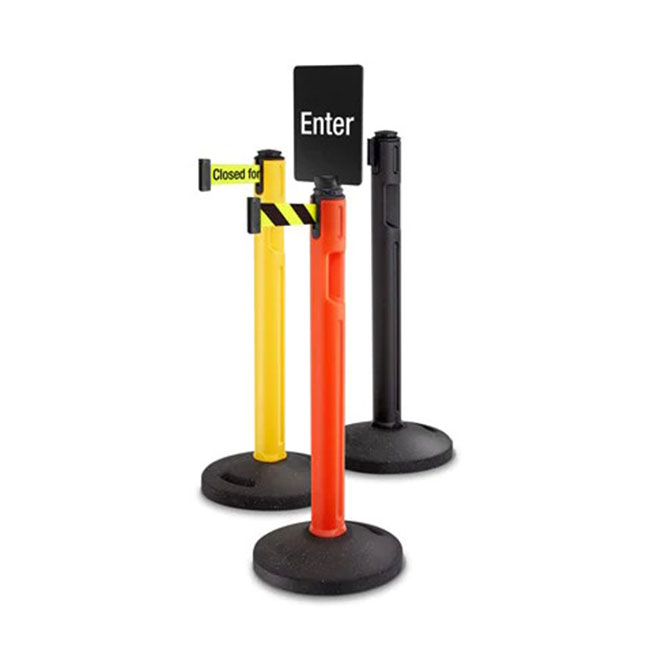
Work Zone
A designated work zone, while not part of an individual’s rope setting kit, is a non-negotiable part of commercial gym safety. Particularly when setters may be high above climbers on the ground, it is important to have a physical barrier that prevents people from walking into a drop zone.
Where to Buy: The Hold Room Safety Barriers
Spare Rope
You never know when you’re going to need some extra rope! This is more of a setter closet necessity than an everyday need, but a few extra ropes can come in handy in a number of situations, from creating a positioning device on the fly to hauling volumes and keeping them secured until they’re attached properly to the wall.
Where to Buy: See Static Lines above and Lead Lines below.
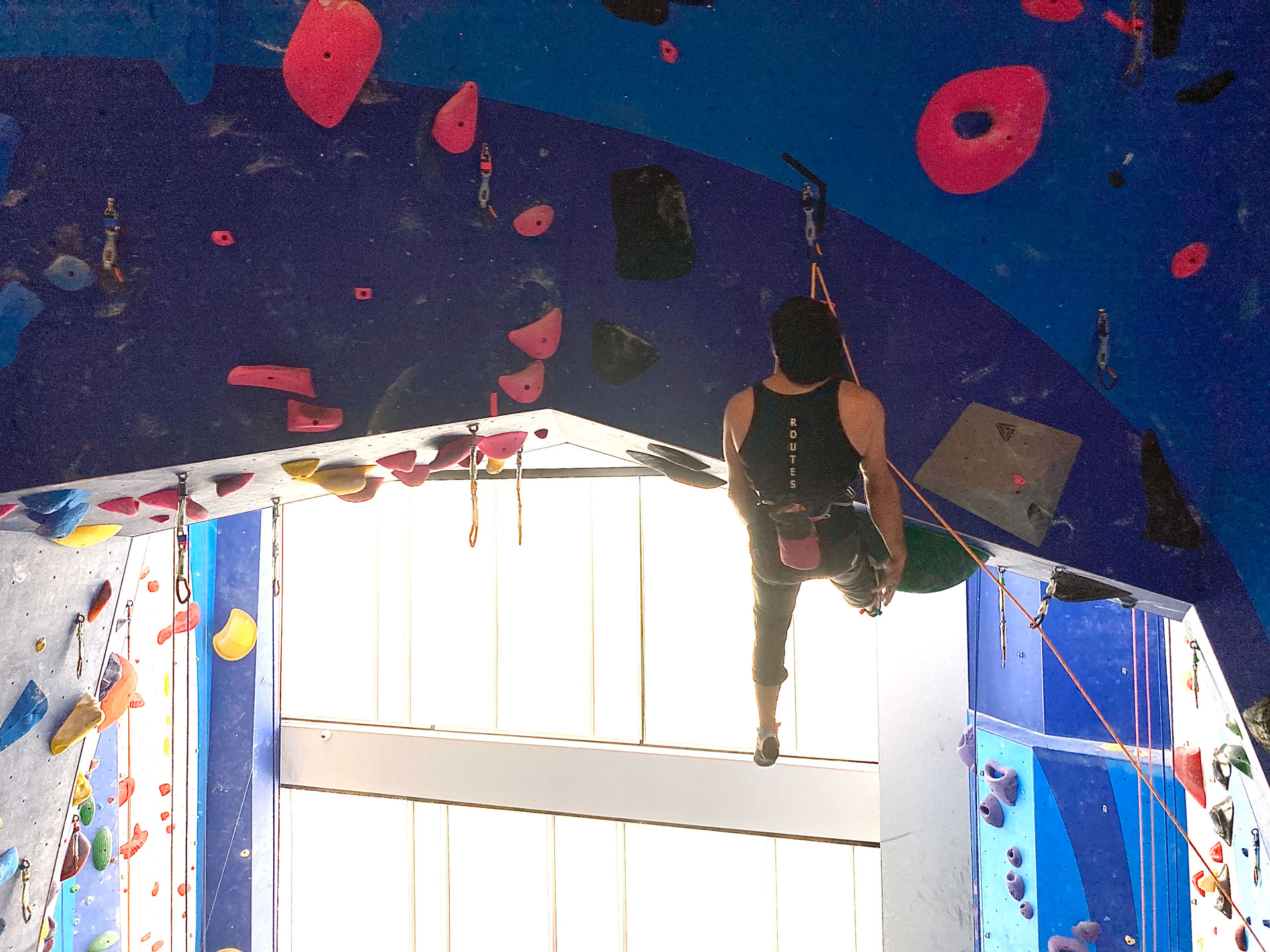
Lead Lines
It’s also good to have setter-specific lead lines for forerunning, so setters aren’t waiting in line for ropes at the desk. Note these ropes should be ONLY used for lead climbing and NOT used for hauling or other tasks that might interfere with the integrity of the rope as a life-saving line.
Where to Buy:
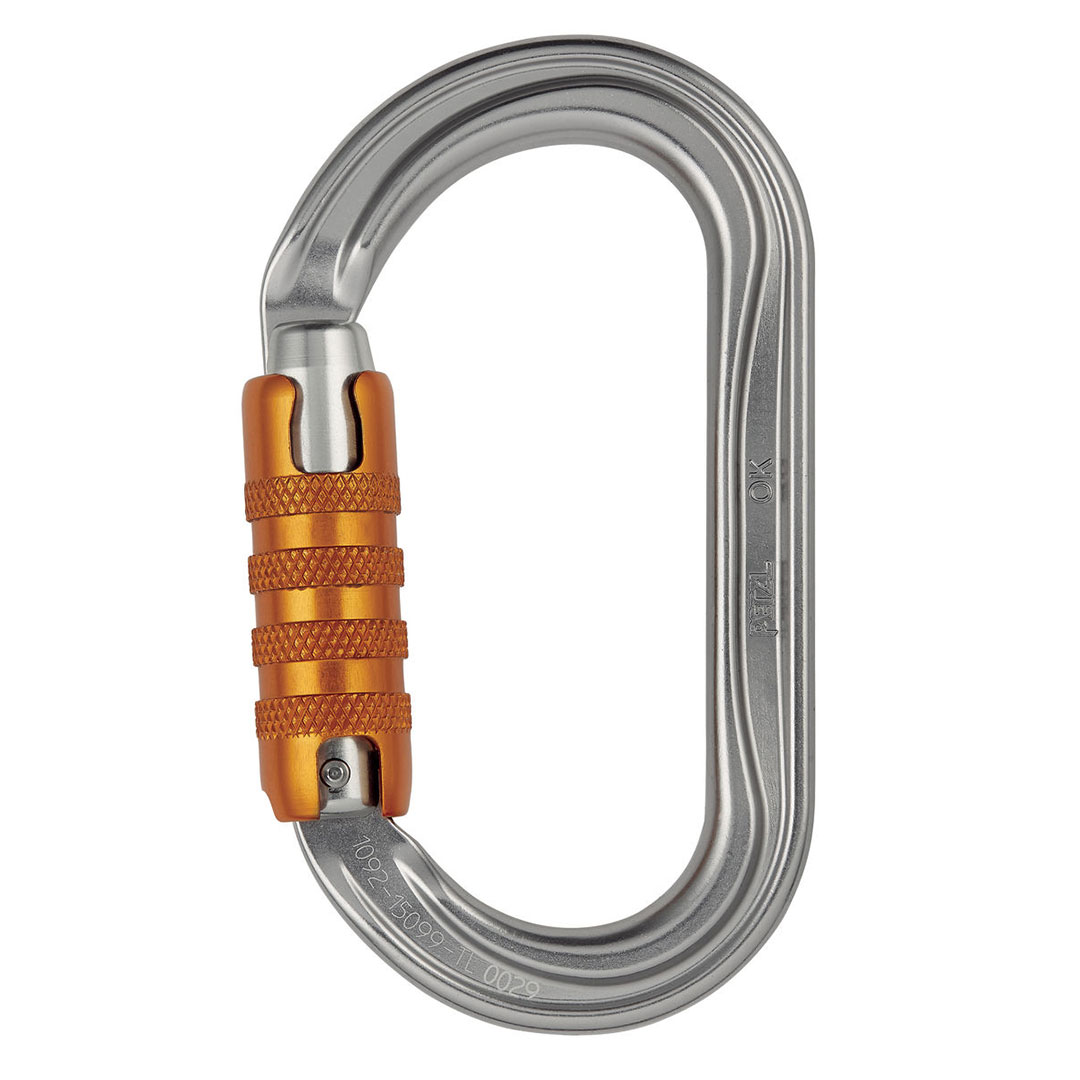
Extra Carabiners
There isn’t much worse than being short a connecter when you need one. Since many of the devices in a rope kit require different shapes of carabiners, it is good to have an assortment of different types of rated carabiners, or at least several of the carabiners you know you’ll need to use. In any situation where a setter’s life depends on a connector, it must be locking, preferably auto-locking.
Where to Buy:
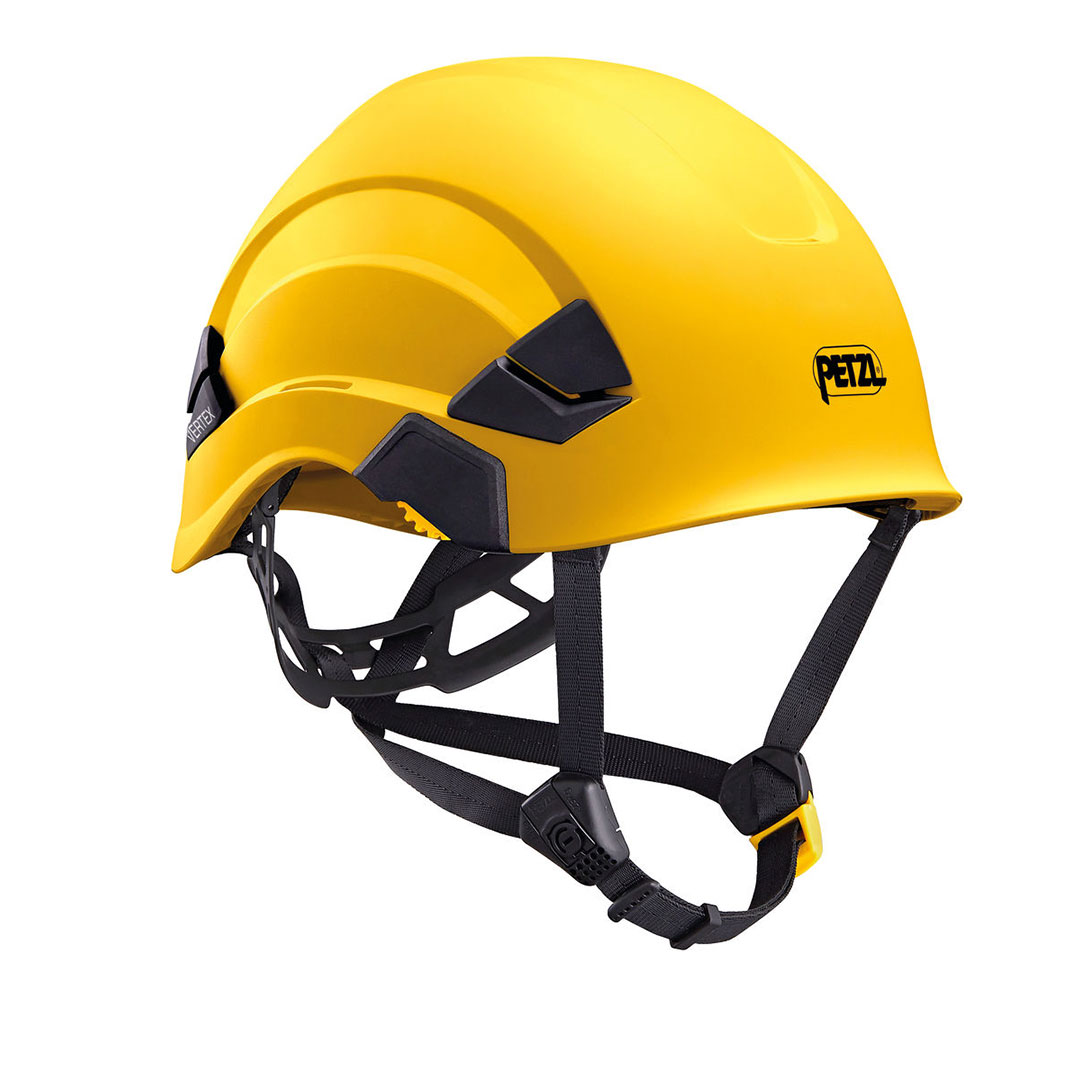
Helmet
Not every gym requires routesetters to wear helmets while working on ropes, but it is highly recommended and is crucial in spaces where people may be working above you. Most climbing helmets, however, aren’t rated for the type of impact one can encounter in a work situation, so make sure to find one with an appropriate ANSI rating.
Where to Buy: Petzl VERTEX Helmet
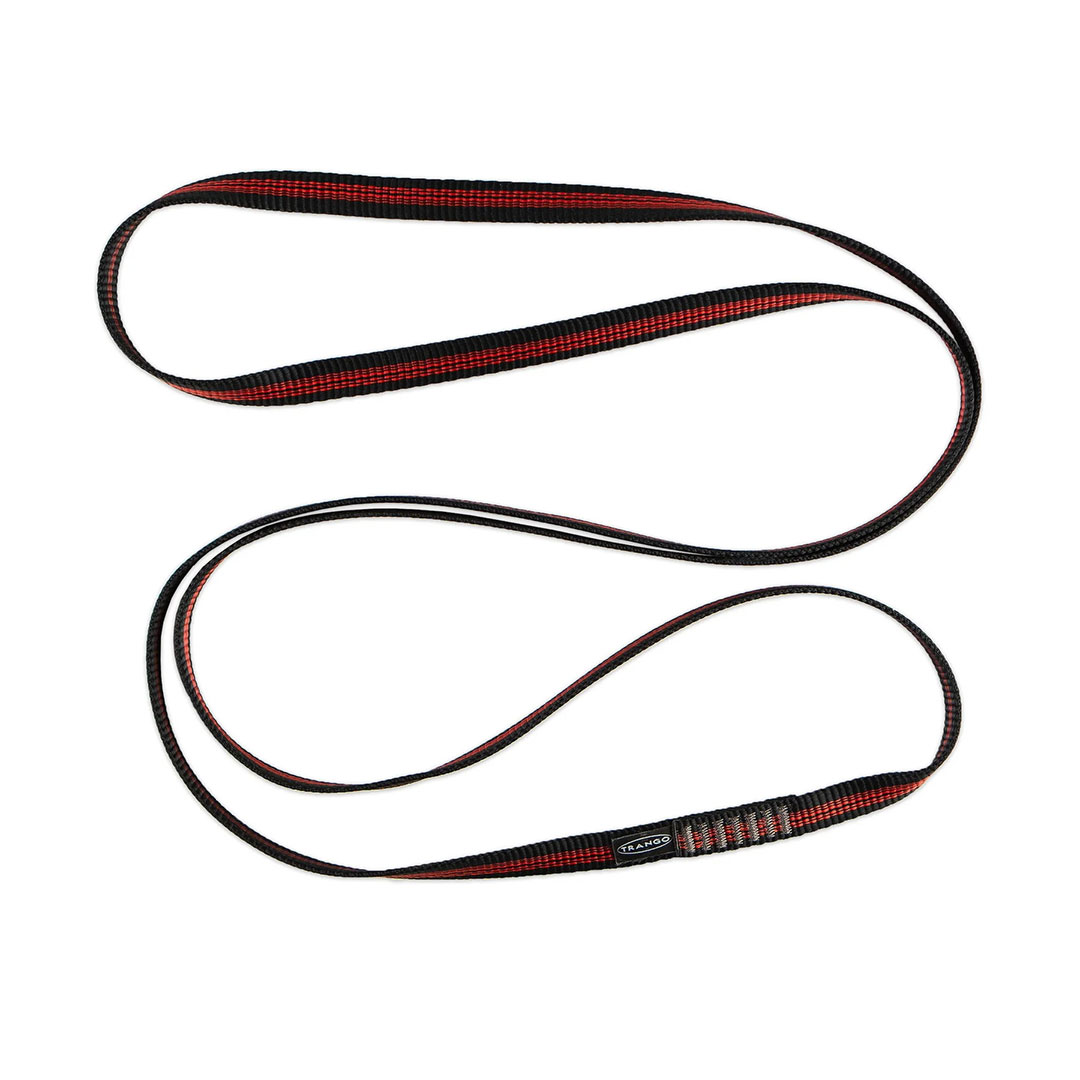
Slings
Whereas most of the tools in a rope setting kit have a hyper-specific purpose, slings are a true jack-of-all-trades. They can be fashioned into a drill leash, used as an etrier in a pinch, tied into a chest harness for rescues, and any number of other uses. A couple of slings might not be part of your everyday setup, but you’ll be glad you have them when you need them.
Where to Buy:
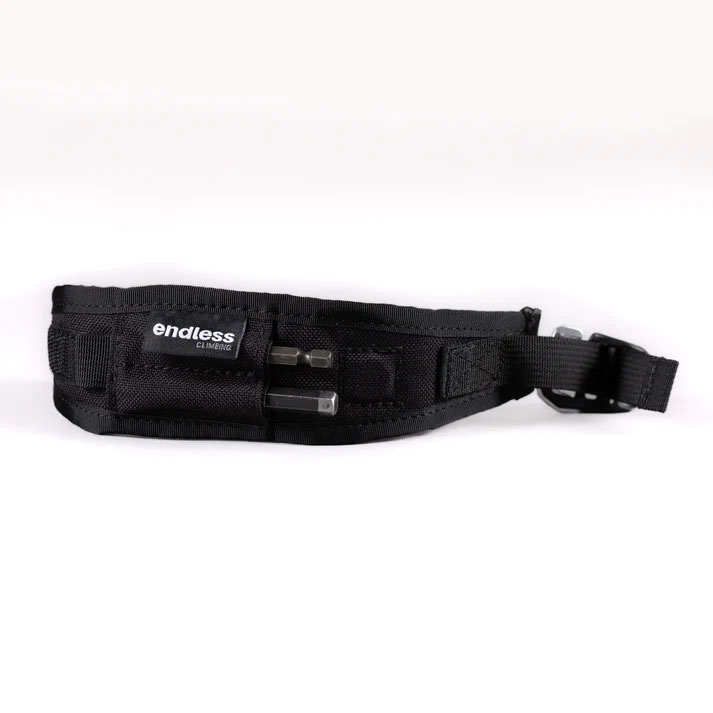
Bit Holder
Dropping bits from 40 feet in the air is a pain. Not only are they a hazard, but they have to be retrieved in order to continue setting. Decrease drops with attachments that hold extra bits in place, either on a drill or clipped to you or your haul bag. Keychain socket adapters provide both a secure and accessible place to store bits. Magnets can be helpful, but should be stored in a pouch to decrease potential drops by removing the risk of brushing a bit off your wrist while rummaging in a bucket or moving around on ropes. Setting-specific wristbands are especially cool—the pictured Endless Climbing Routesetting Wristband features a magnet and nice double-elastic bit slots, so it works for both a quick bit hold and the more secure storage needed for work at height.
Where to Buy:
- Socket Adapter Bit Holder
- Endless Climbing Routesetting Wristband
- FastCap PROHOLD Magnetic Wristband
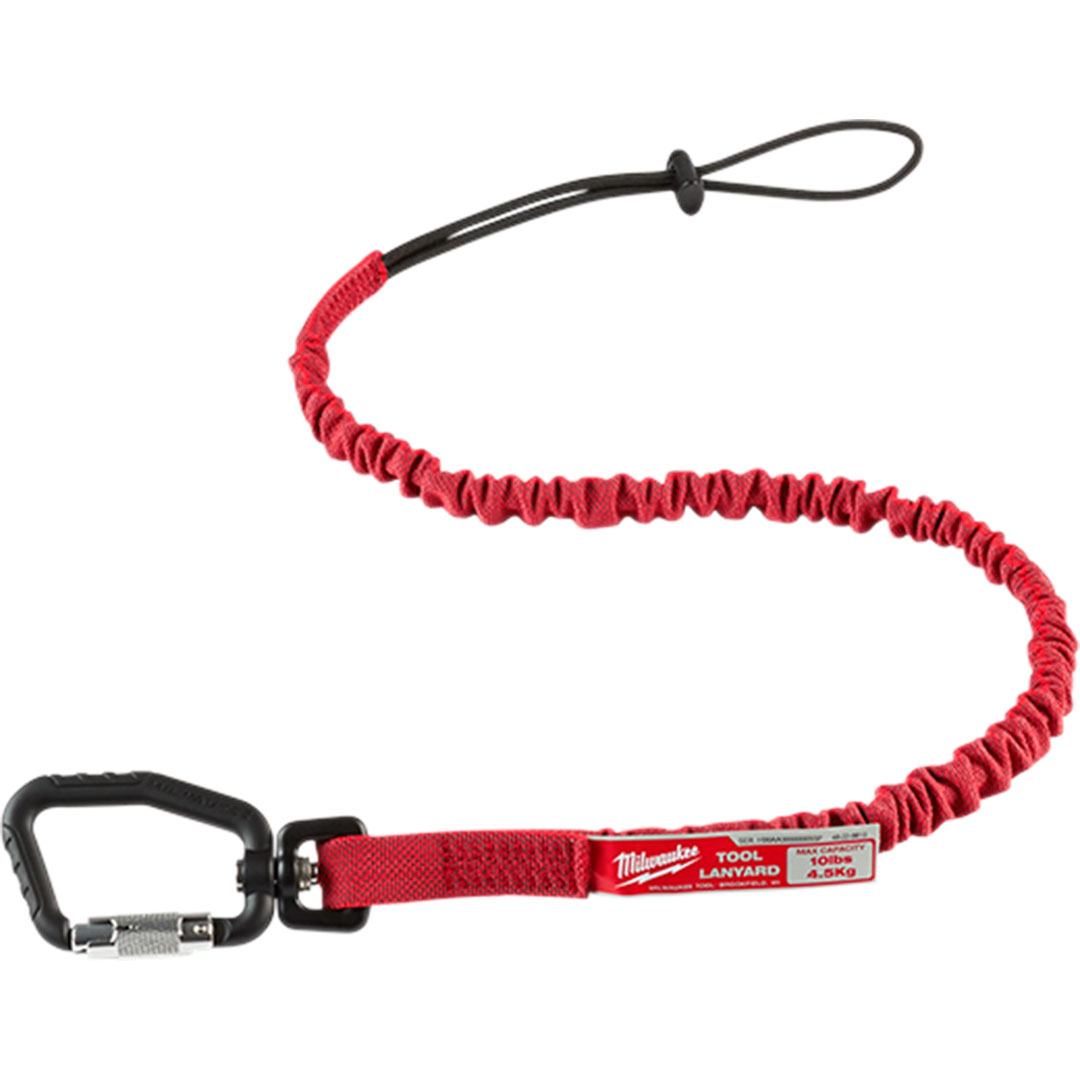
Drill Leash
When working at height, our tools should always be tethered to ourselves. Leashes can be purchased from a number of makers, or they can be made from rated cordelette. Milwaukee and Trango both make a bungee leash that clips easily to a harness. Make sure your leash and attachment points are appropriate for the setting environment, and note that locking carabiners which are part of a bungee system (as pictured above) are not necessarily rated for safety and catching larger weights like climbing carabiners are.
Where to Buy: Milwaukee Locking Tool Lanyard
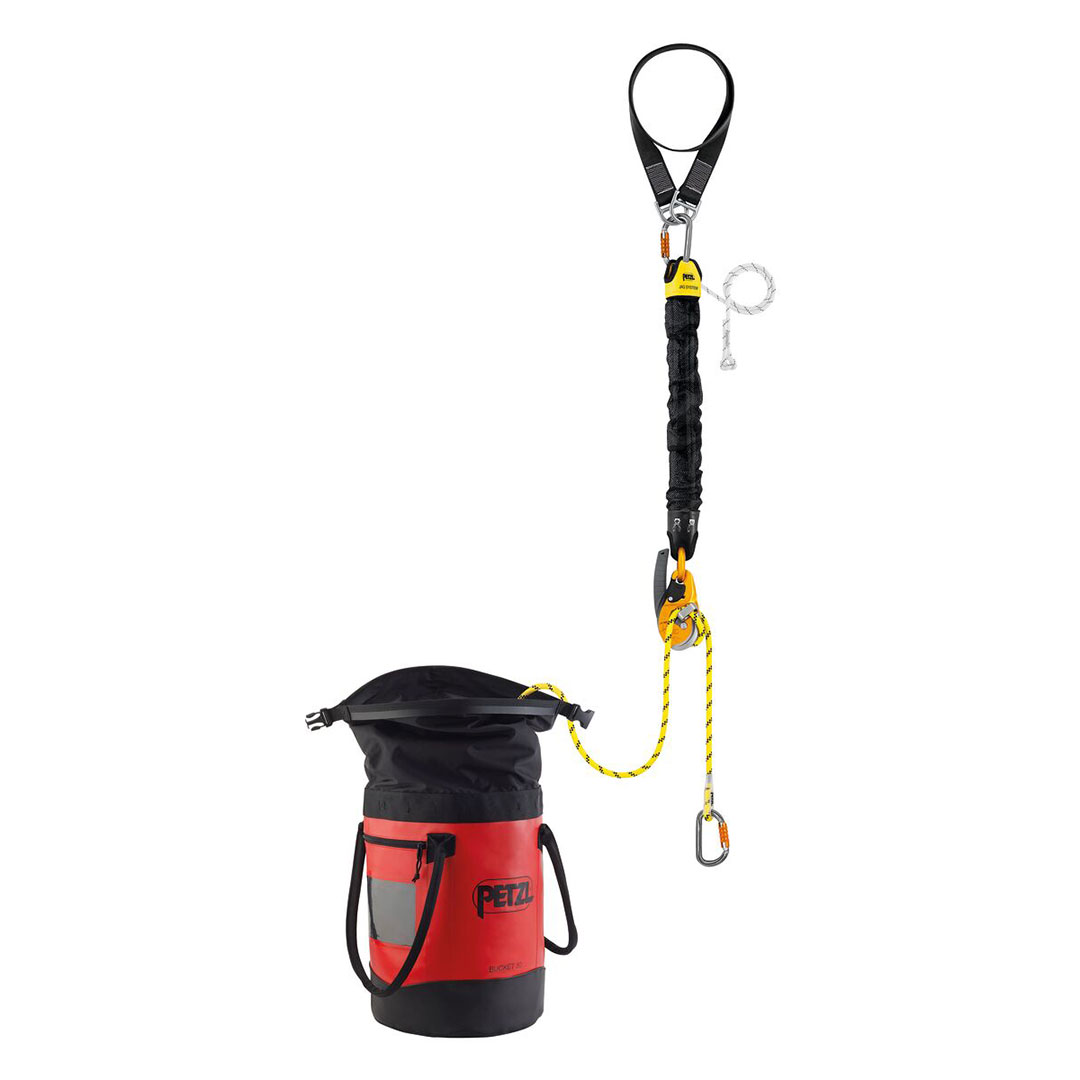
Rescue System
The Petzl JAG SYSTEM is a pre-packaged leverage kit to help with on-the-wall rescues; for example, for removing tension from a system and picking an unconscious setter off their lines. These systems are not standard in gyms yet, but their use is taught in Work at Height courses, and eventually a JAG RESCUE KIT or similar system will be expected in the emergency kit of any setting closet.
Where to Buy:
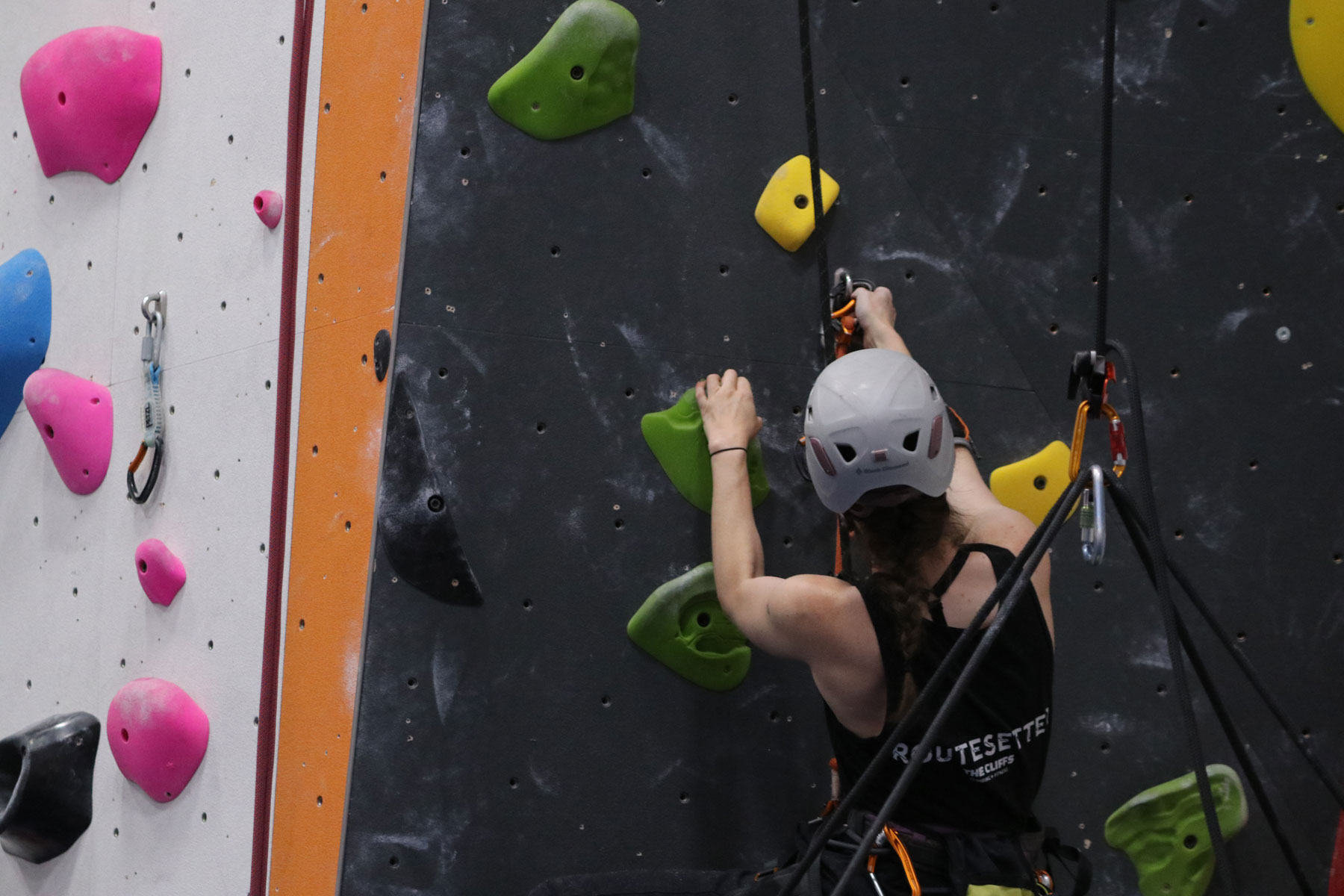
More Resources
As previously mentioned, this list focuses on essentials for routesetting on ropes and is not exhaustive of all the products on the market, nor all the equipment routesetting requires. For more routesetting essentials, be sure to check out The Drill: A Routesetter’s Best Friend and 9 Routesetting Essentials, which cover other basics, like impact drivers and PPE, as well as the need for training procedures. Routesetters working at height should always be properly trained in their craft. In addition to CWA Work at Height Certification, there are several resources out there for further professional development, some of which are listed below. Remember: Routesetters create the core product of a climbing gym, so investing into a routesetting program and the routesetters on the team is an investment into the community at the gym and well worth making.
Where to Learn:
- CWA Routesetting Guide
- CWA Work at Height Certification
- MEWP Operator Certification
- Petzl Technical Institute Trainings
- USAC Routesetting Certification
- Vortex Routesetting & Consulting
- Routesetting Institute Instruction
- The B.I.G. Initiative Workshops
- Bolt & Revolt Workshops
- Syndicate Routesetting Clinics
- Thread Climbing Workshops
- Louie Anderson Climbing Courses
- Setter Showdown Events
- Setter Summit Events
- Siege Climbing Events
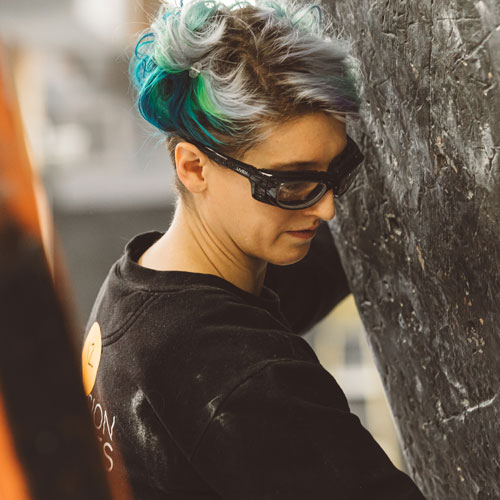
Born and raised in Boulder, Colorado, Foxman McCarthy-James began routesetting in 2015 in Boston while working as a professional violist, but fell in love and pivoted to setting full-time with Brooklyn Boulders. Now as the head setter for Alta Climbing in Phoenix, Arizona, Foxman is focused on developing strategies to promote sustainability for career routesetters.
In 2021, Foxman and her colleague Justin Wright created Vortex Routesetting after years of travel and conversations led to a data project documenting routesetting workloads and salaries across the country. Vortex provides clinics and consulting for both climbing gyms and individual routesetters.




